The perfect, quintessential comfort food from North India is Punjabi Kadhi Pakora. Here is my mom’s authentic recipe in which crispy pakoras (onion-gram flour fritters) are dipped in a tangy and thick yogurt soup (kadhi), topped with an aromatic tempering.
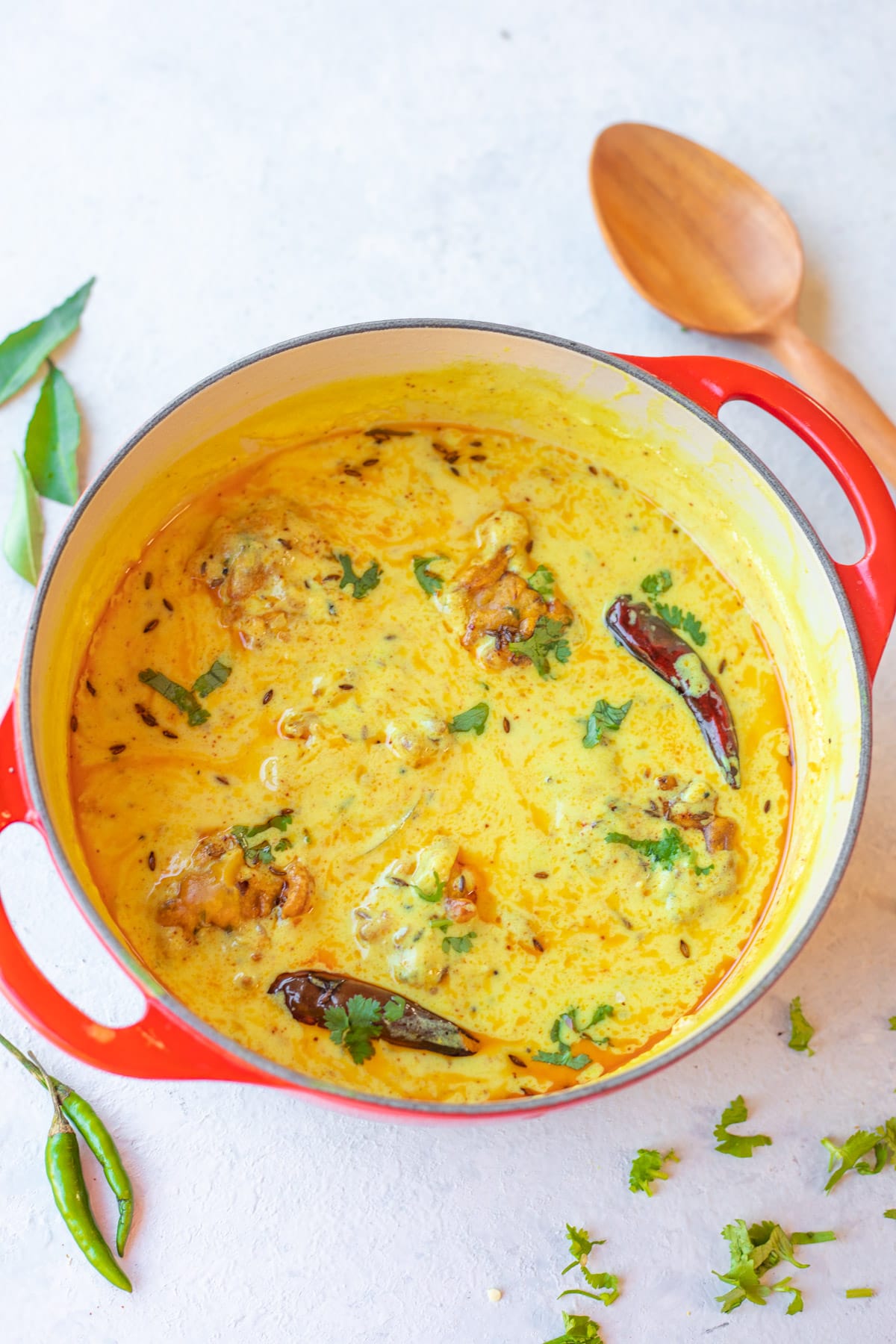
I am a huge fan of Kadhi; Kadi-chawal is my favorite meal on a lazy Sunday afternoon.
Being a punjabi, kadhi pakora was a weekly dinner in our home. My mom makes the best kadhi. Not too thick, not too thin…just perfect with crispy pakoras and a wonderful tempering.
You can definitely enjoy kadhi without the pakoras too. Some people like to add boondi to their kadhi. And some add boiled potato cubes to make Aloo Kadhi. My grandmom used to add boiled garbanzo beans to kadhi.
I also enjoy the the sweet and tangy Gujarati kadhi version. I mean…I am a true kadhi fan!
My mom was visiting last summer, so I got her authentic punjabi recipe, which I am sharing here with you all.
Table of Contents
Watch How to Make Punjabi Kadhi Pakora
What is Kadhi?
Kadhi, also known as karhi, is a vegetarian yogurt-based curry famous throughout India and Pakistan. Gram flour fritters (besan pakoras) are drenched in a hearty yogurt-based yellow sauce and garnished with a spicy Punjabi tempering / tadka.
It is rich, thick, velvety, spicy, and has a fantastic tangy taste.
This recipe is complex in its flavor but comforting at the same time. Like other Indian dishes, this also has regional variations.
The best way to cook it is to let it simmer. As it thickens, it tastes better, partly because the yogurt and gram flour absorb the flavors.
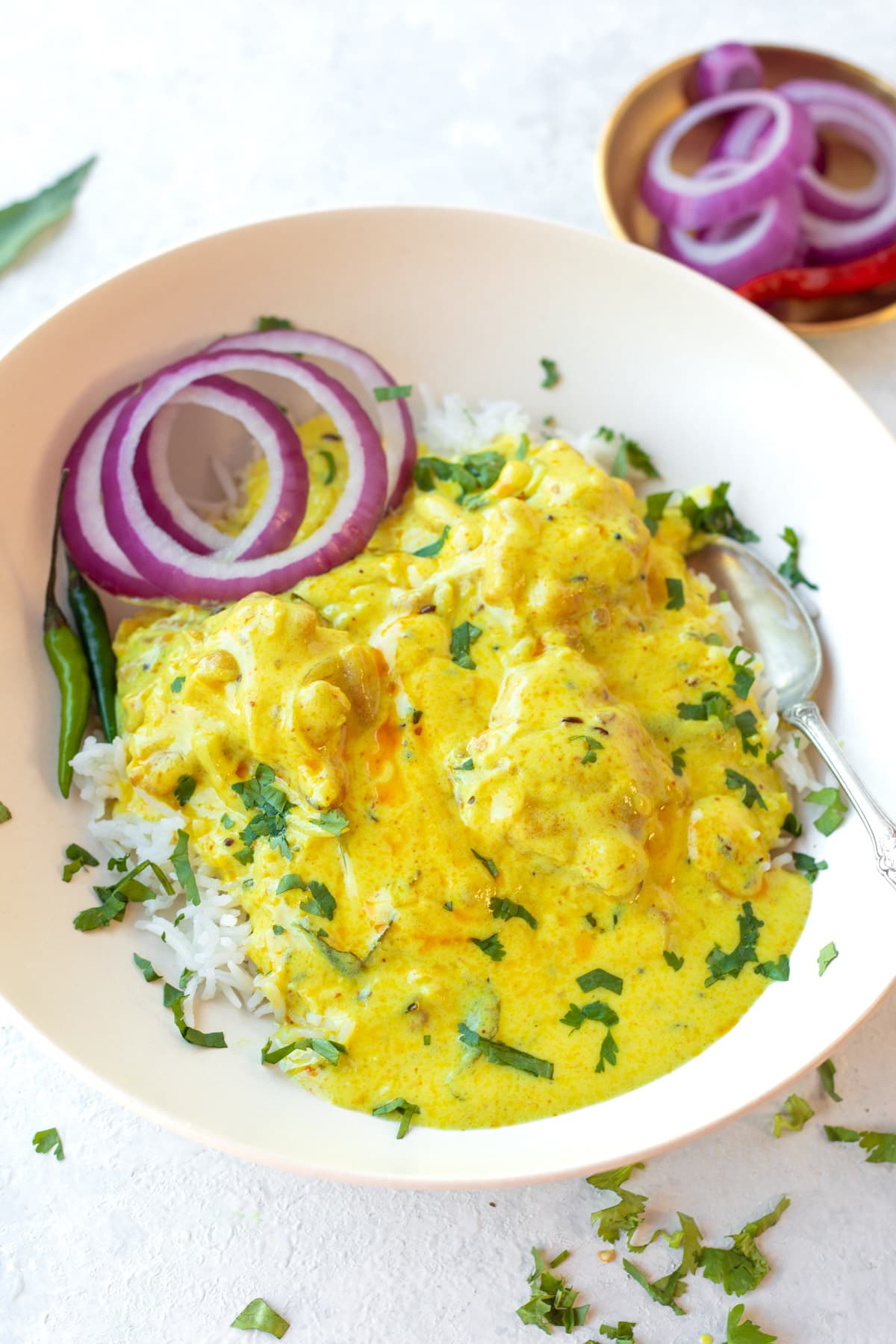
Why we love Kadhi Pakora?
- It is simple and easy to prepare
- It is healthy – a good source of protein and calcium
- It is vegetarian and gluten-free
- You can use old, sour yogurt instead of throwing it away.
- An utterly satisfying meal when consumed with rice.
- Kids and adults love it equally
Ingredients
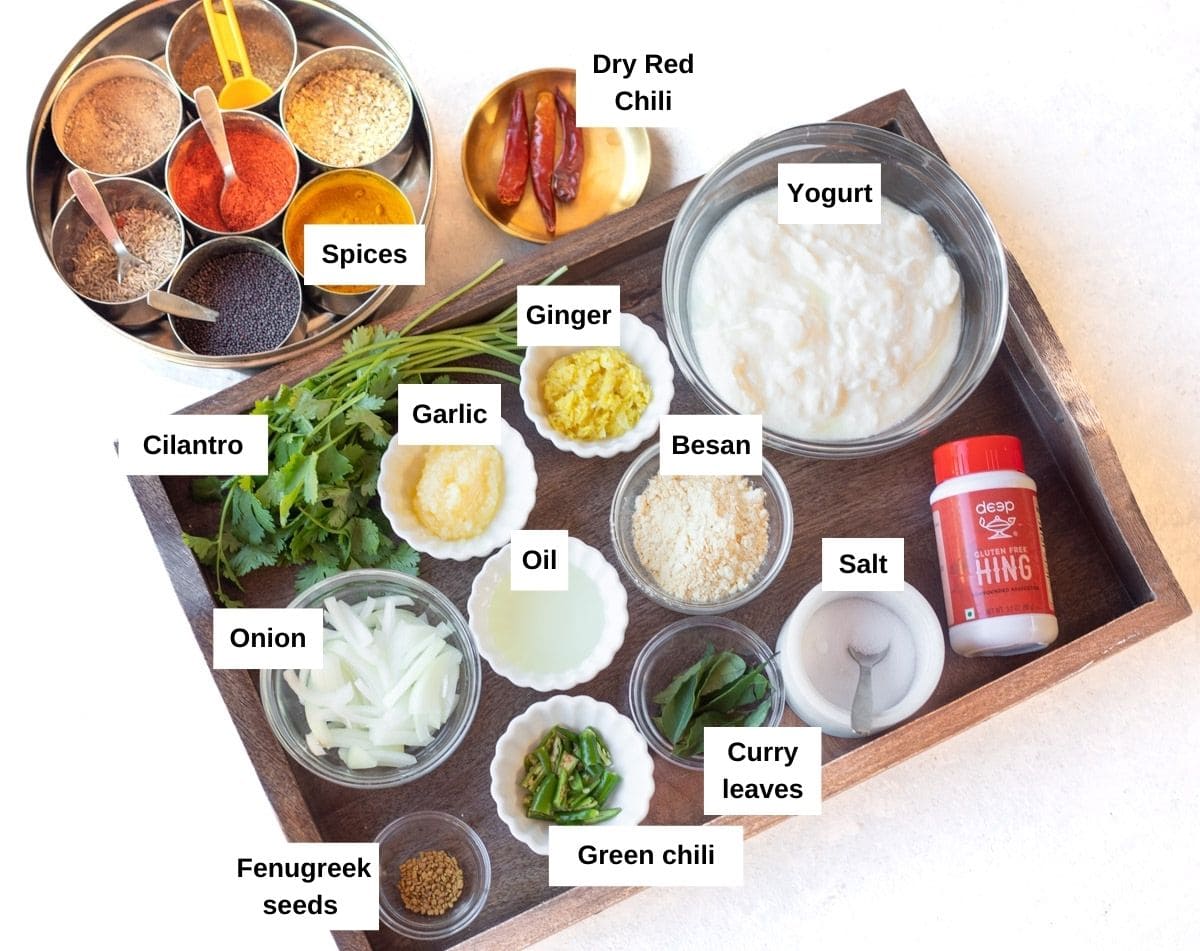
- Yogurt – This is the main component of Kadhi. You can use either full-fat or low-fat yogurt; however, full-fat yogurt gives a creamier texture. Ensure that the yogurt is at room temperature. Remember, the yogurt needs to be SOUR. The best way to do this is to take out the yogurt from the fridge in the morning and keep it on the countertop if you plan to make kadhi for dinner. You can use buttermilk if you do not have yogurt available. You will need to adjust the amount of water if using buttermilk.
- Besan (gram flour) – This is another essential ingredient for Kadhi that is needed to thicken the sauce. A small quantity of besan is mixed with the yogurt to make a lump-free, smooth batter.
- Spices – Turmeric powder, coriander powder, asafoetida (hing), mustard seeds (rai), fenugreek seeds, mustard seeds, cumin seeds, dried whole red chilies, and Kashmiri red chili powder are the spices you need for kadhi pakoda. These enhance the taste of the kadhi and make it warm and earthy. You will find all of these at the Indian grocery store.
- Aromatics – Onion, ginger, and garlic. These provide a characteristic flavor to the kadhi pakora. You can use chopped or sliced onion.
- Green chili – A little heat balances out the blandness of the kadhi, but this is optional, and you can skip it.
- Herbs – Curry leaves are used for tempering to add rustic flavor and aroma. Cilantro is used as a garnish.
- Oil – used for tempering and frying. You can use ghee for tempering instead of oil.
How To Make Punjabi Kadhi?
The Kadhi-making process consists of 3 steps – the yogurt based soup, the pakoras, and the tempering.
- In a large bowl, add yogurt, gram flour, salt and turmeric. Whisk it well. Then add water, continue whisking to make sure no lumps are formed.
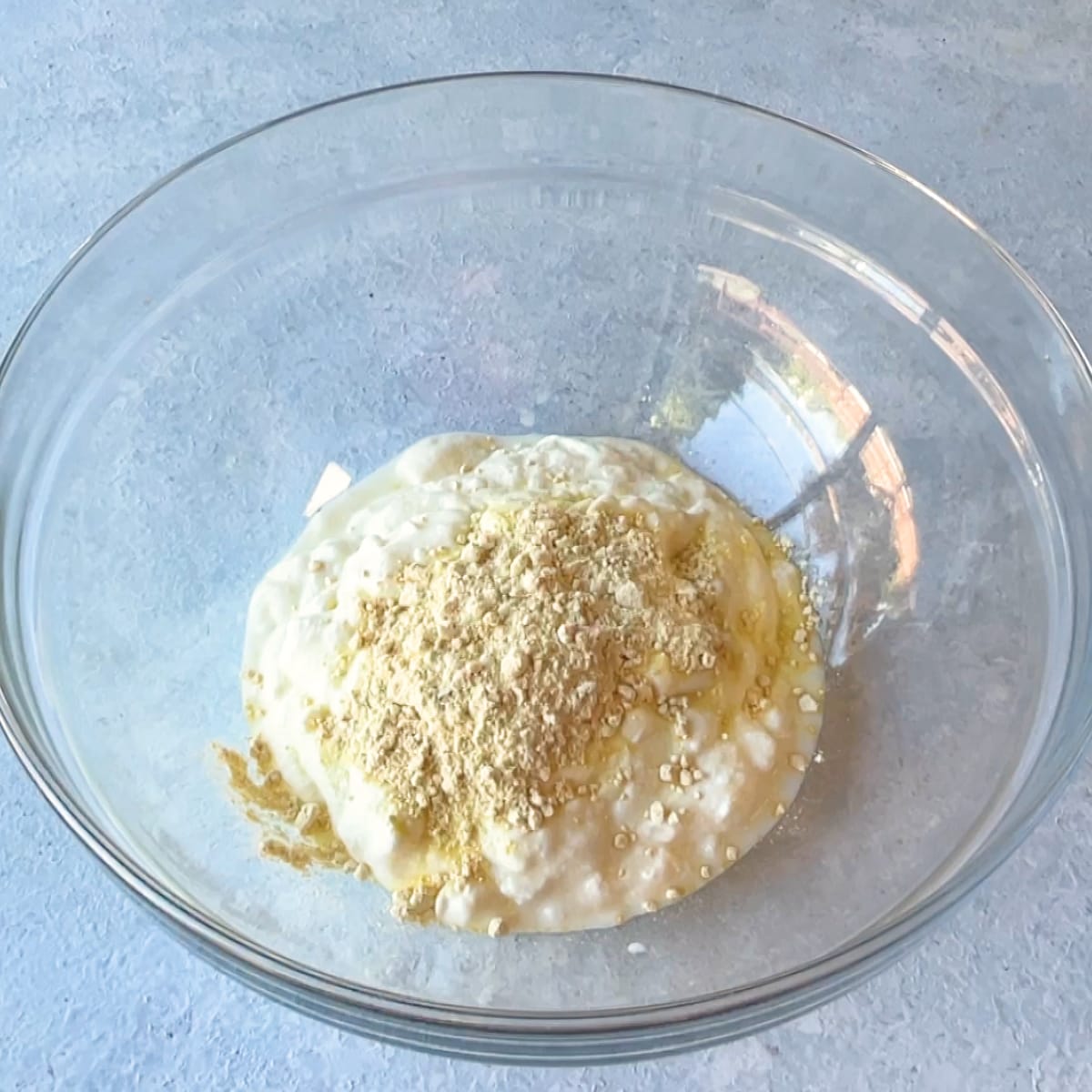
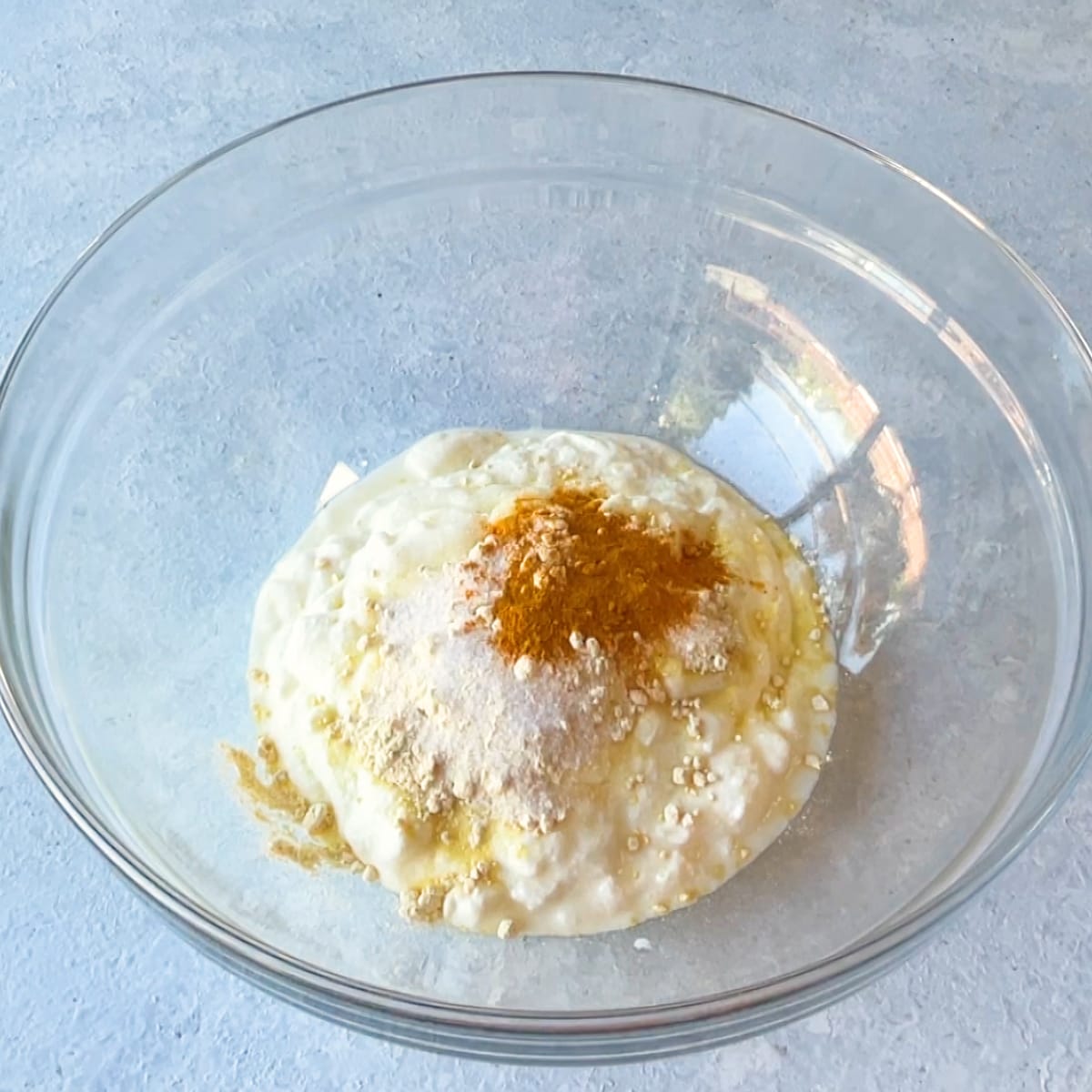
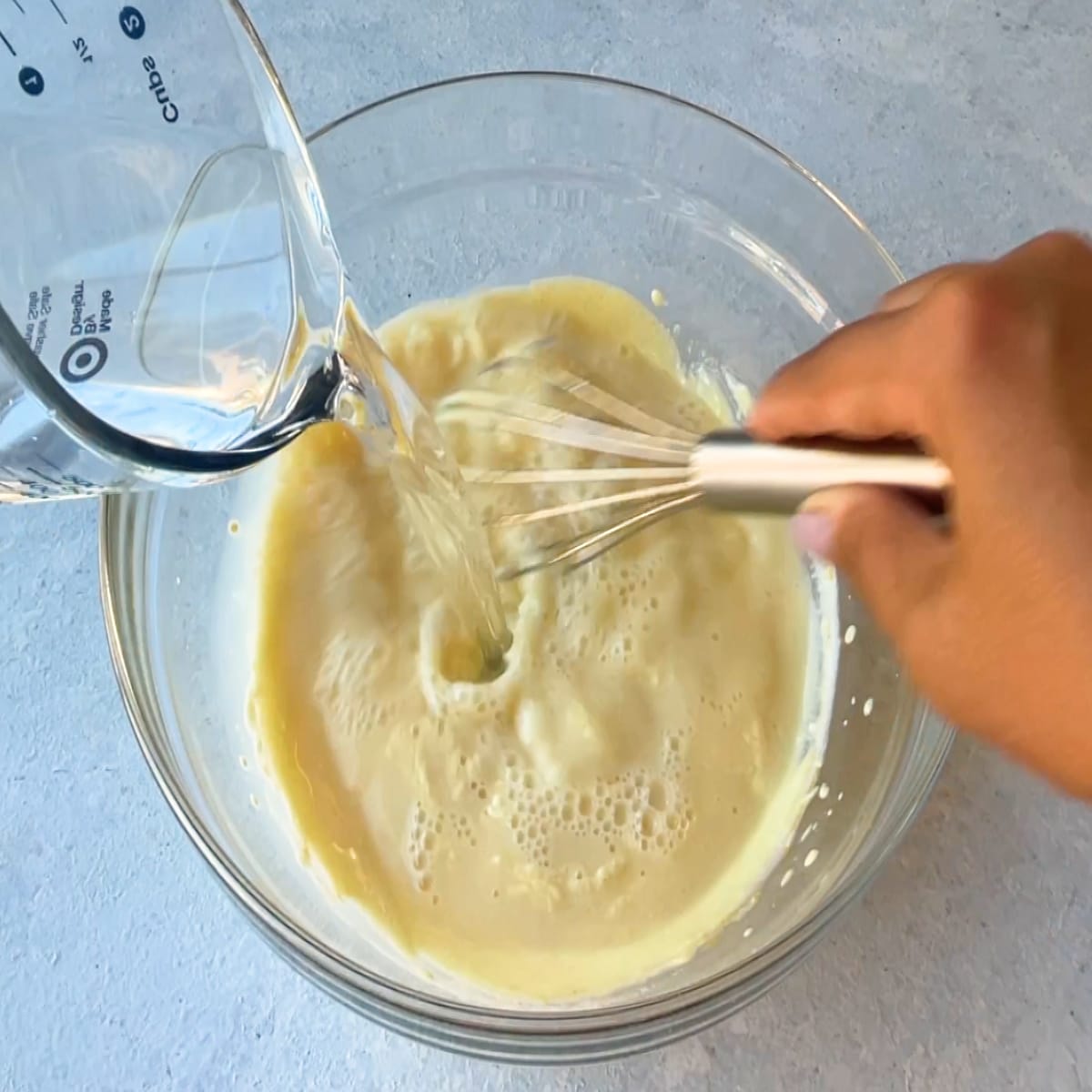
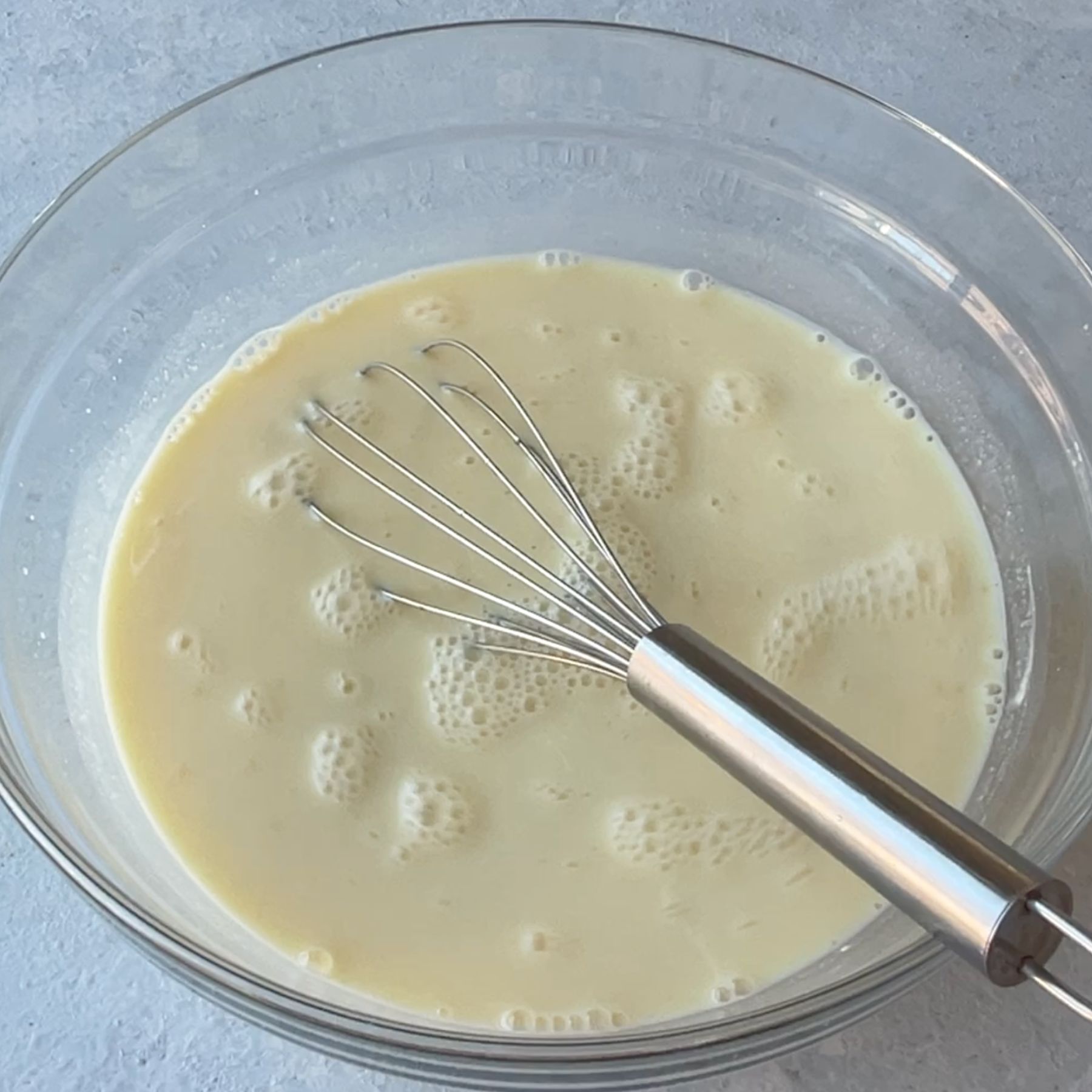
- Heat a large pot on medium-high flame. Add the ghee or oil. If possible, use mustard oil, it gives an authentic flavor to the kadhi. Make sure to heat the mustard oil until it smokes.
- Add the tempering ingredients such as asafoetida, cumin seeds, mustard seeds, fenugreek seeds, curry leaves. Let them splutter.
- Add the green chili, ginger, garlic. Then add the onions and sauté for a minute. Then add the coriander powder and give it a mix.
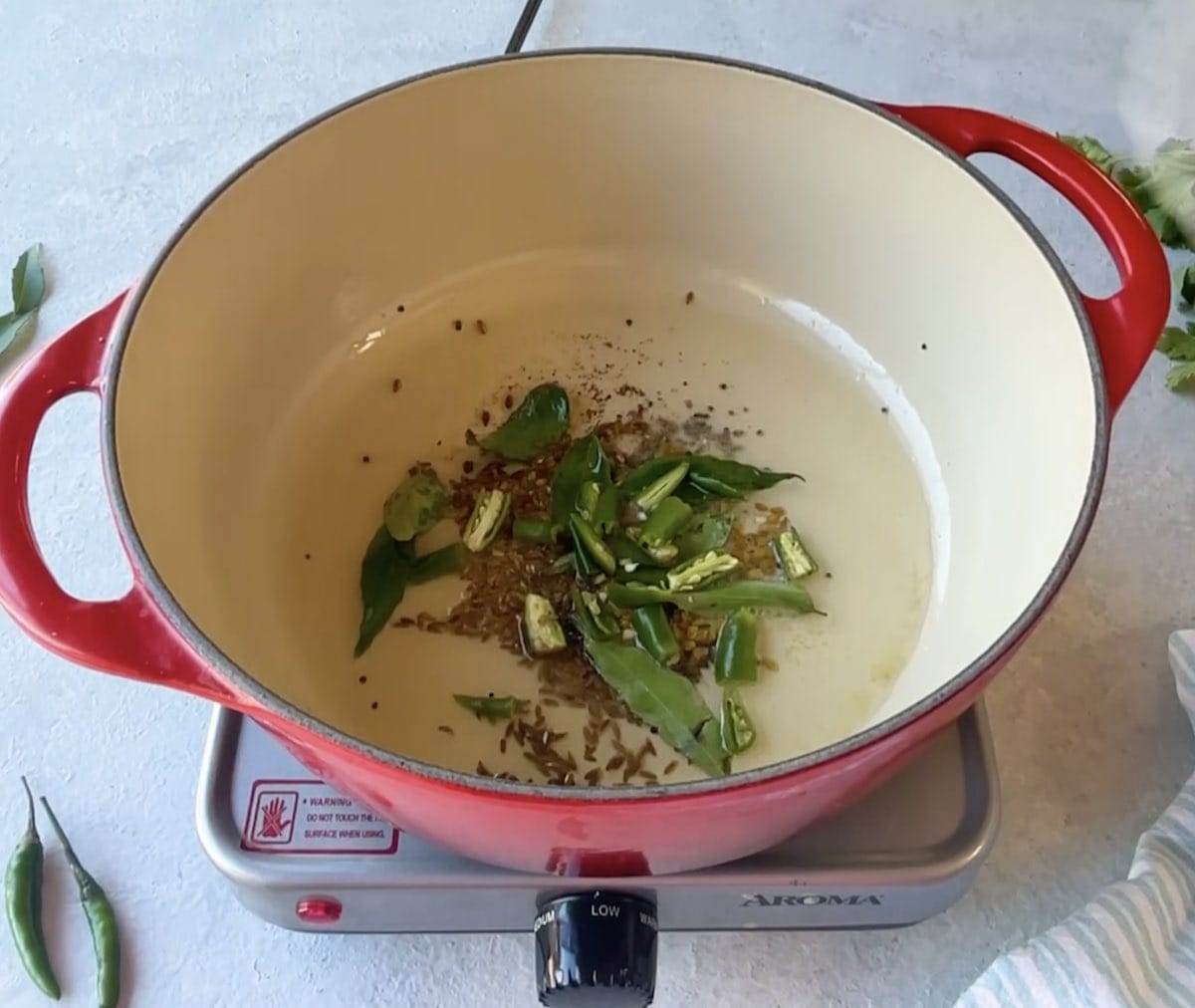
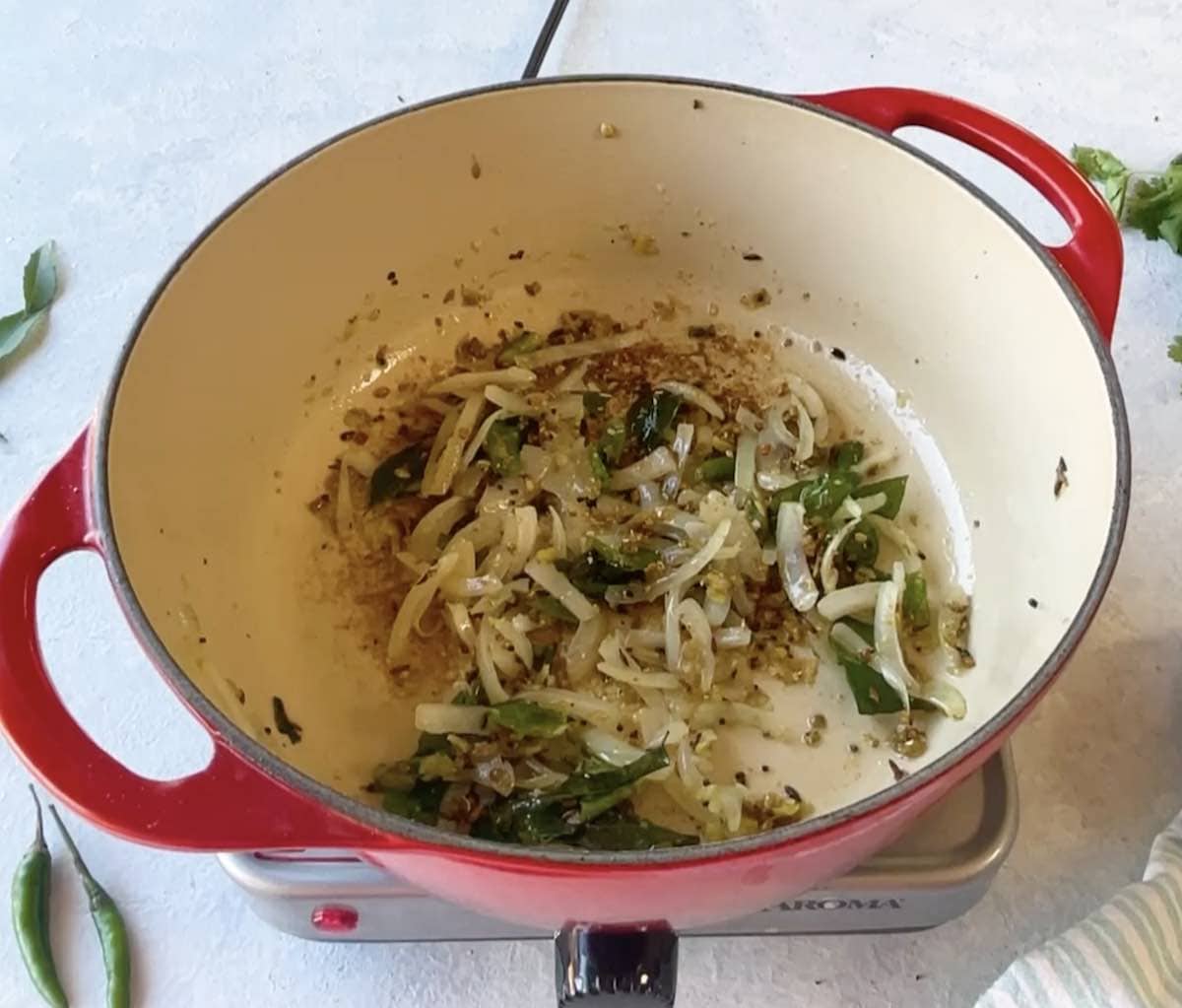
- Add the prepared yogurt mixture to the pot while stirring continuously. Keep stirring until it starts to boil. Stirring is very important as otherwise the kadhi can curdle.
- Once boiled, keep on low and simmer for about 20-25 minutes.
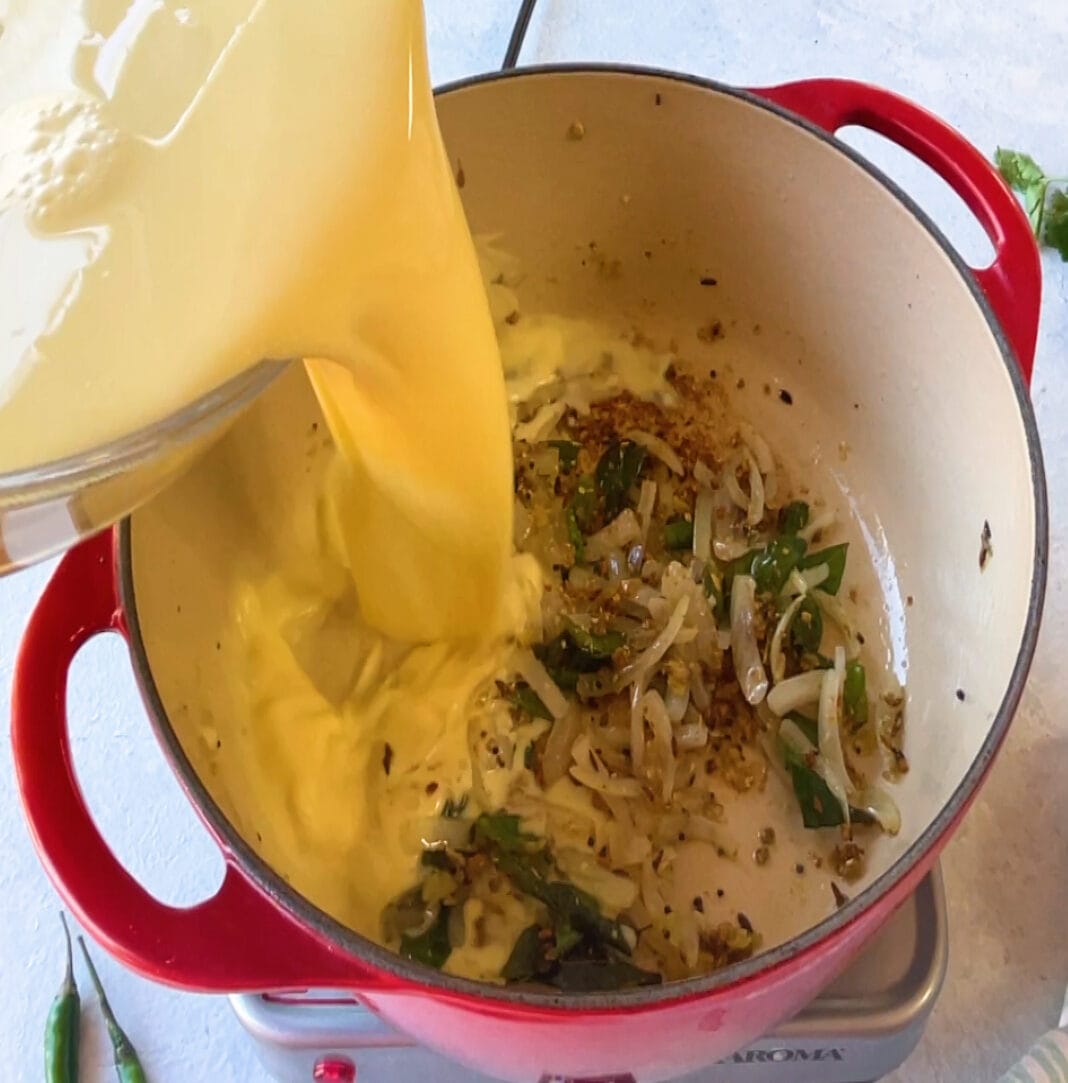
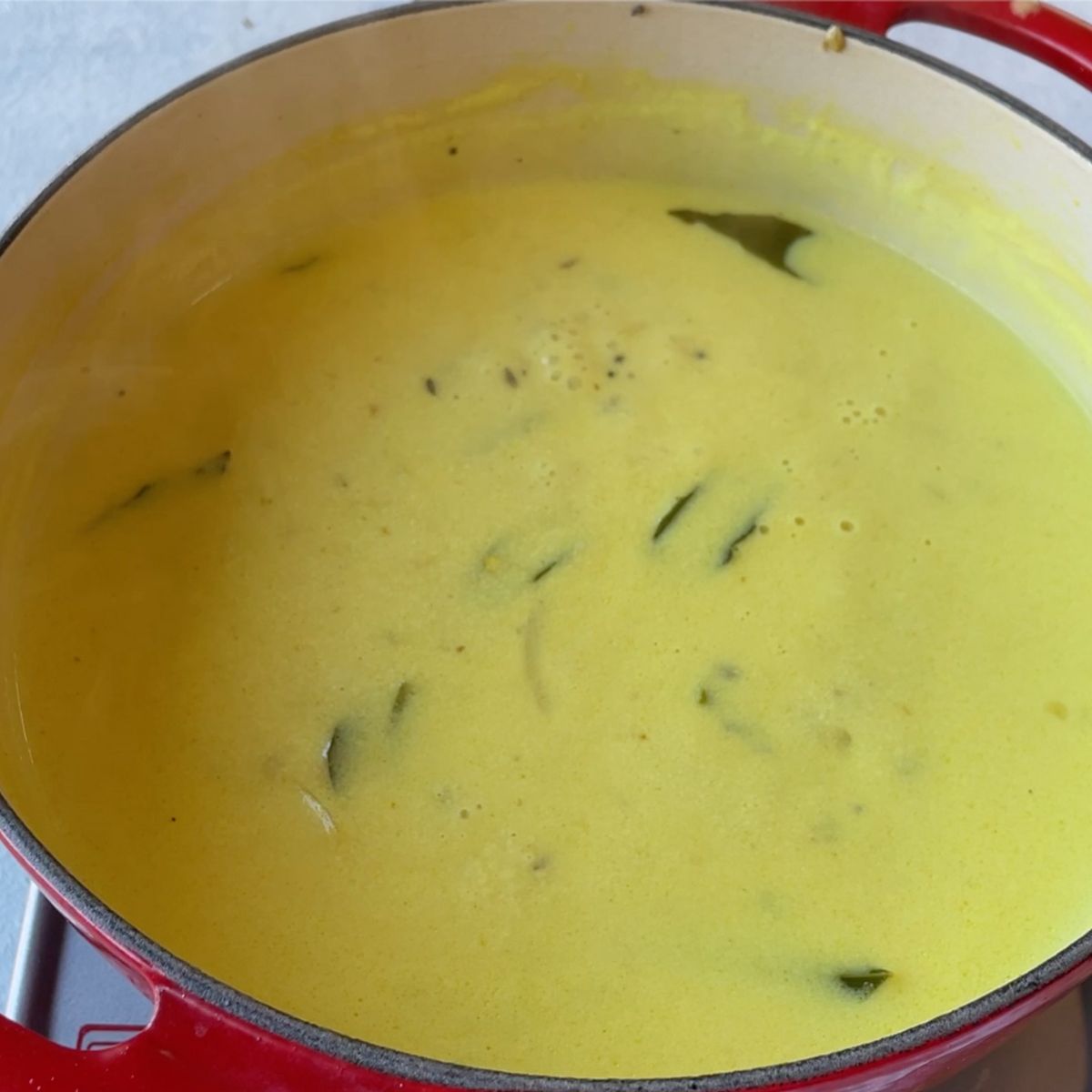
How To Make Pakoras For Kadhi?
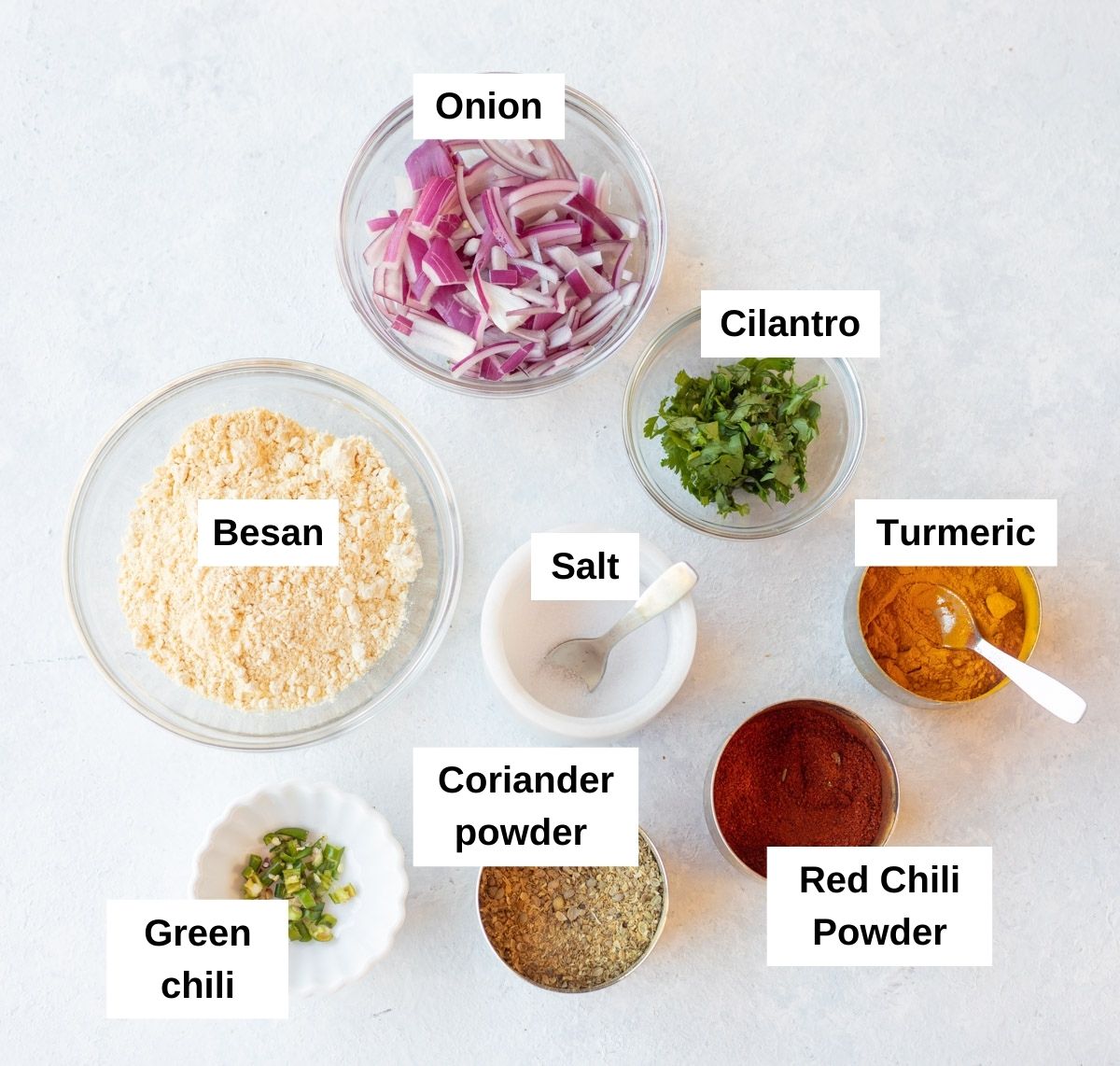
- Mix besan, spices, and water. If you have time, keep this mixture for about 15-30 minutes. This helps to make soft pakoras. If not, add a pinch of baking soda to the gram flour batter. This will be a thick batter, not a runny batter.
- Add onions and mix well with your hands. You want to add onions to the batter when you are ready to fry the pakoras.
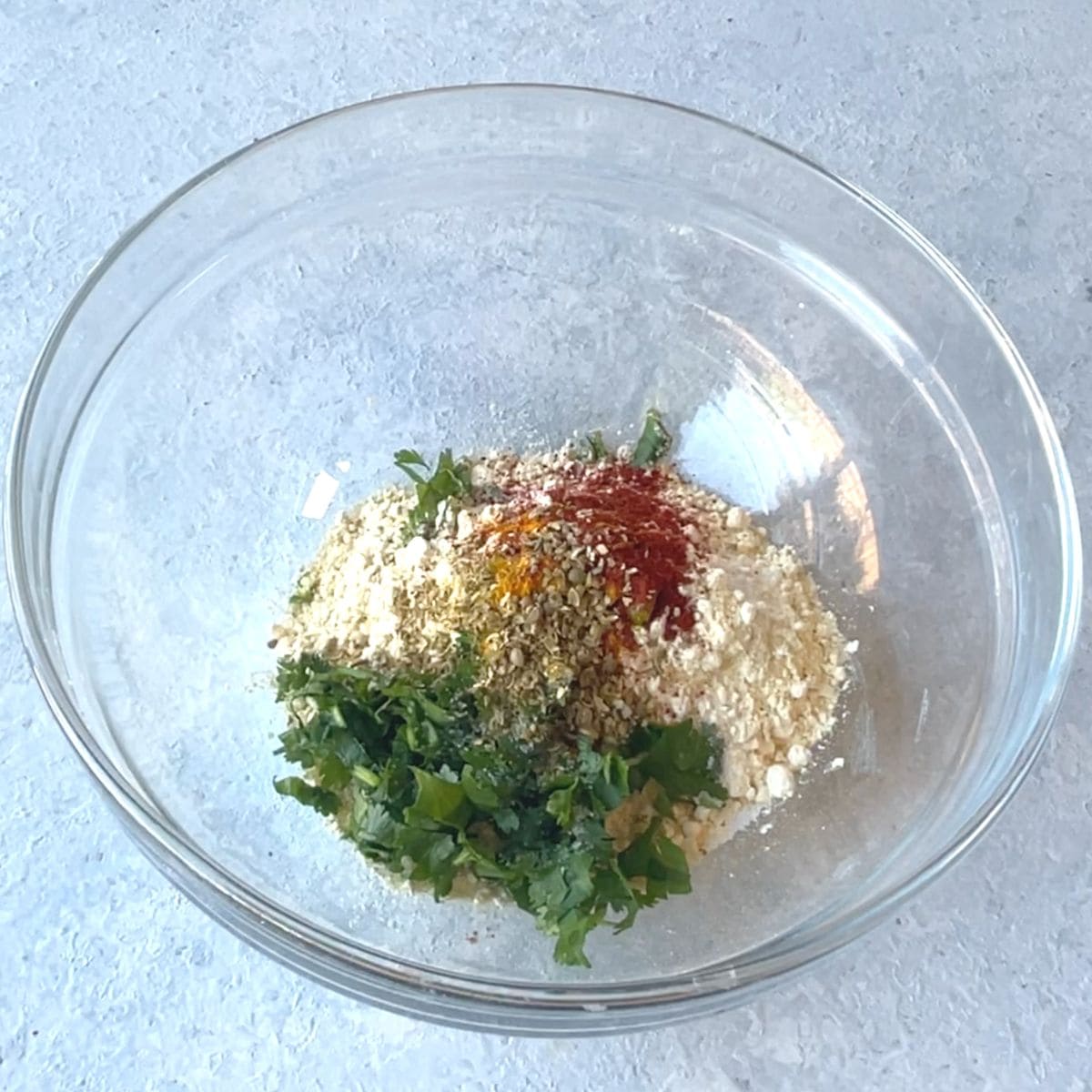
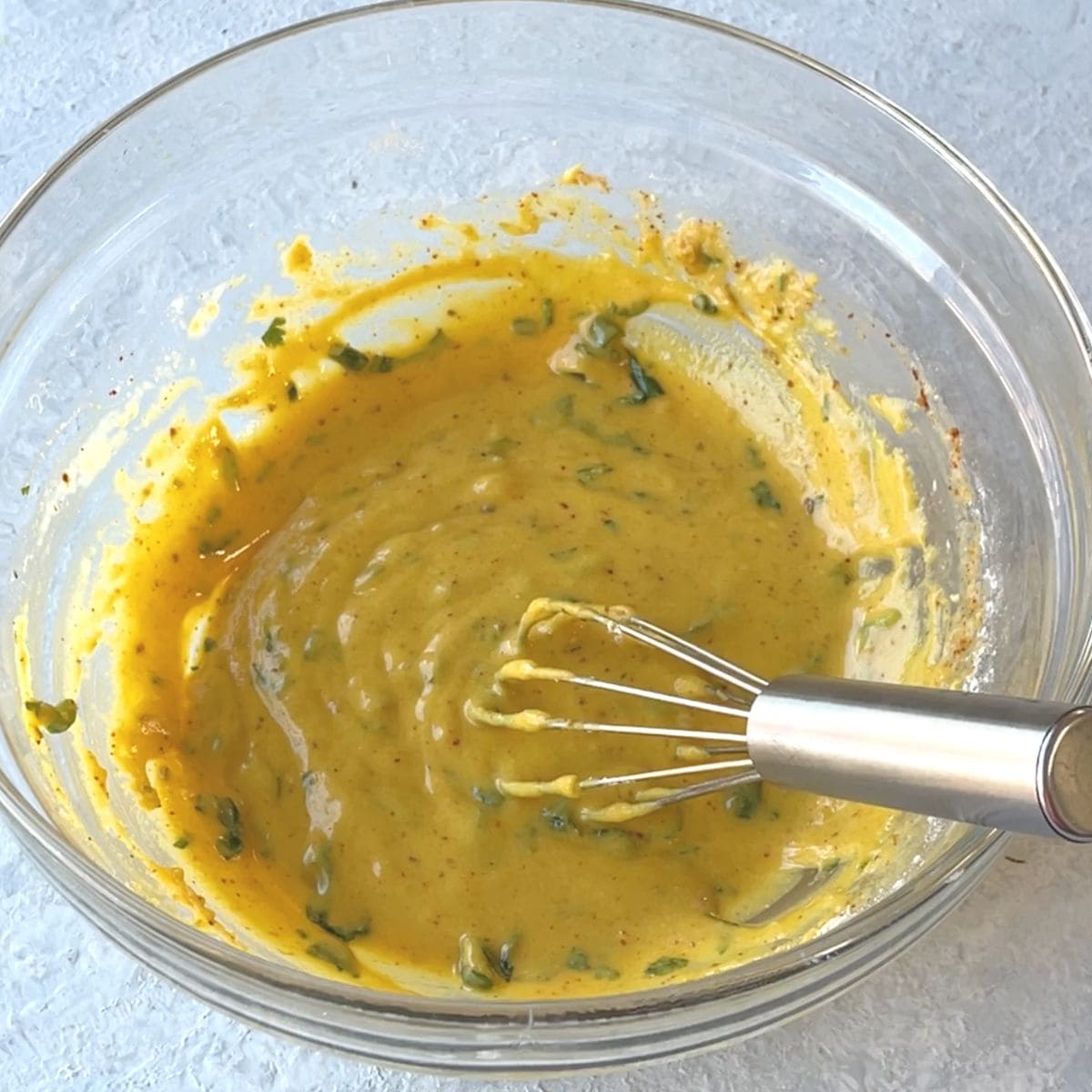
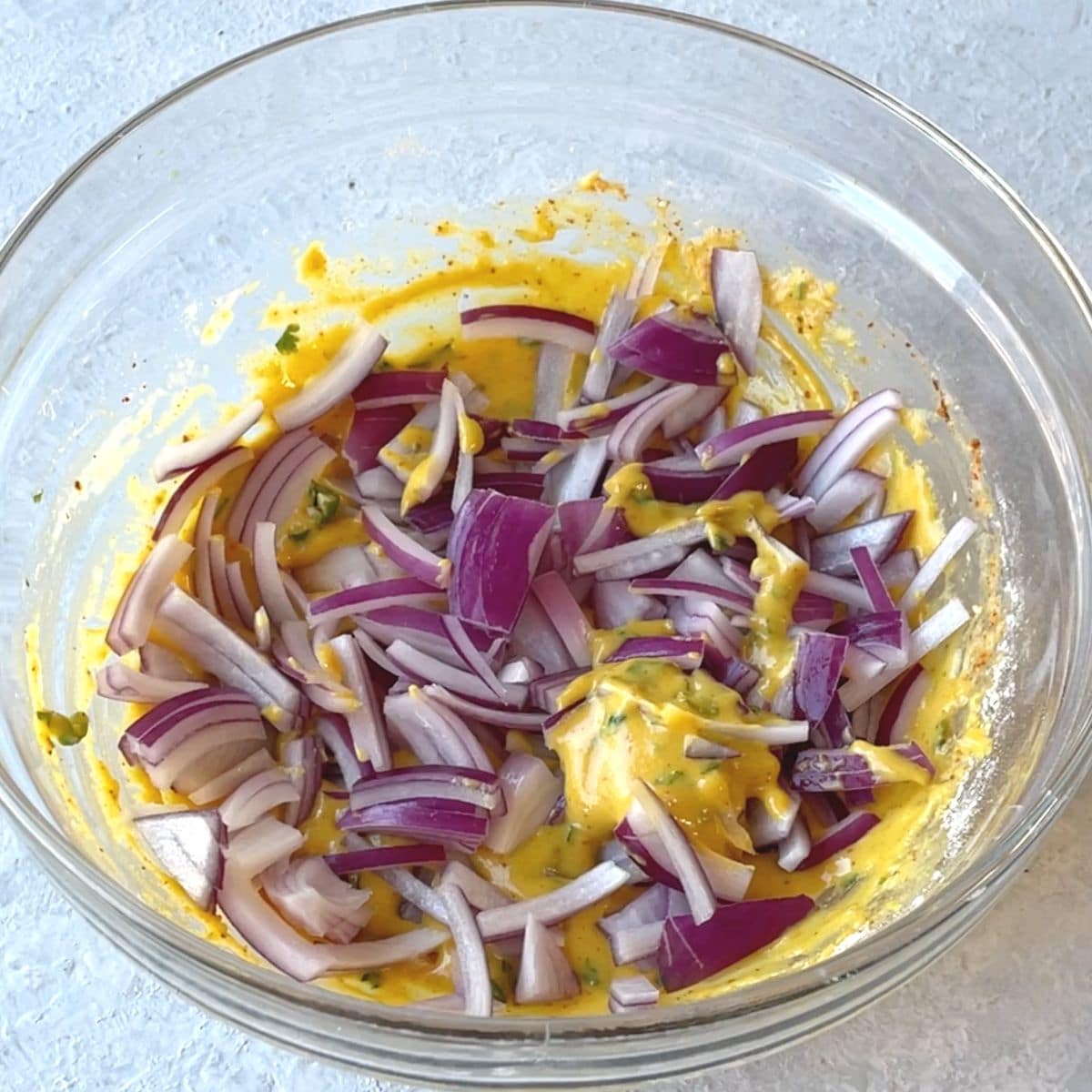
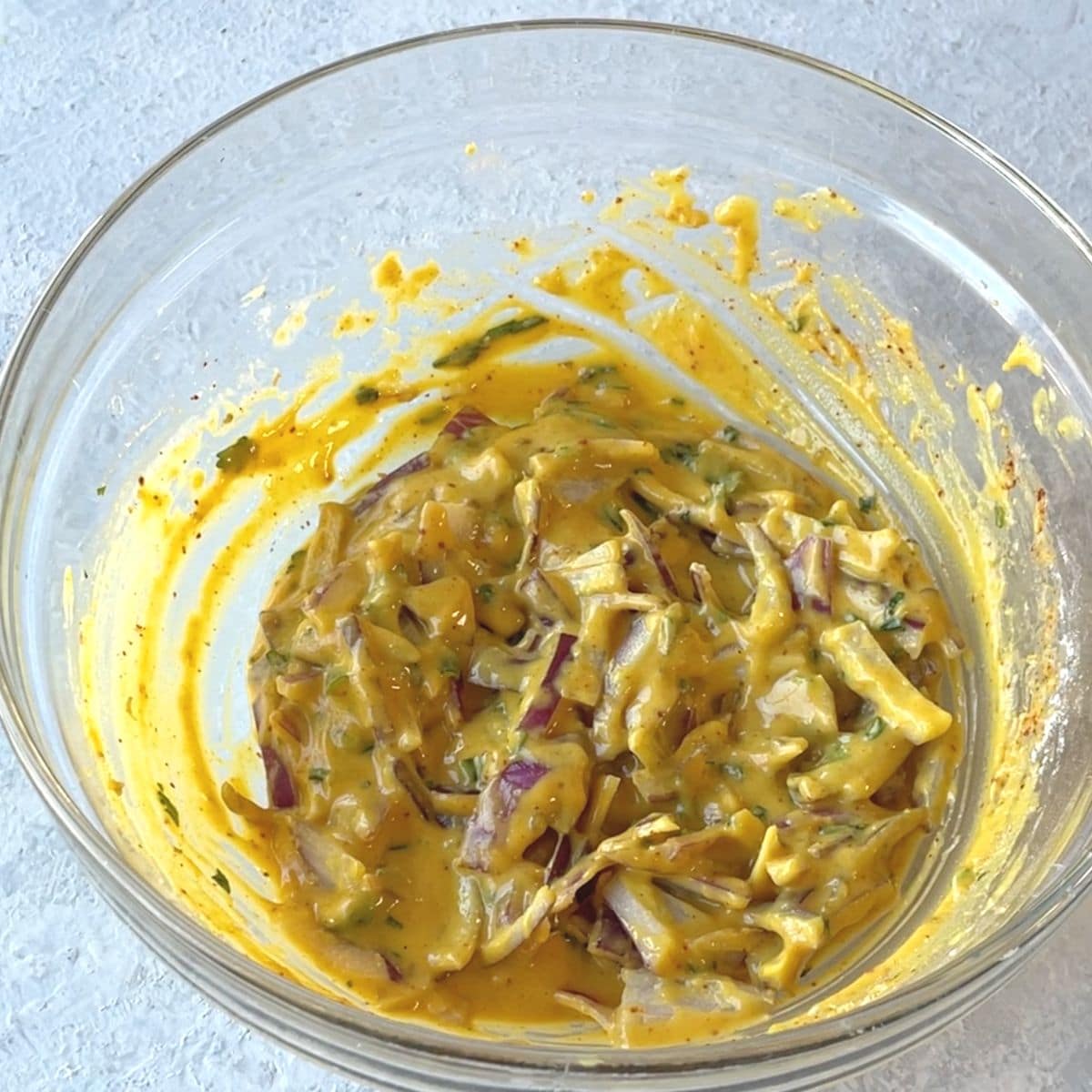
- Fry the pakoras in hot oil until they are golden brown on all sides.
- Transfer the pakoras to a paper towel lined plate or bowl.
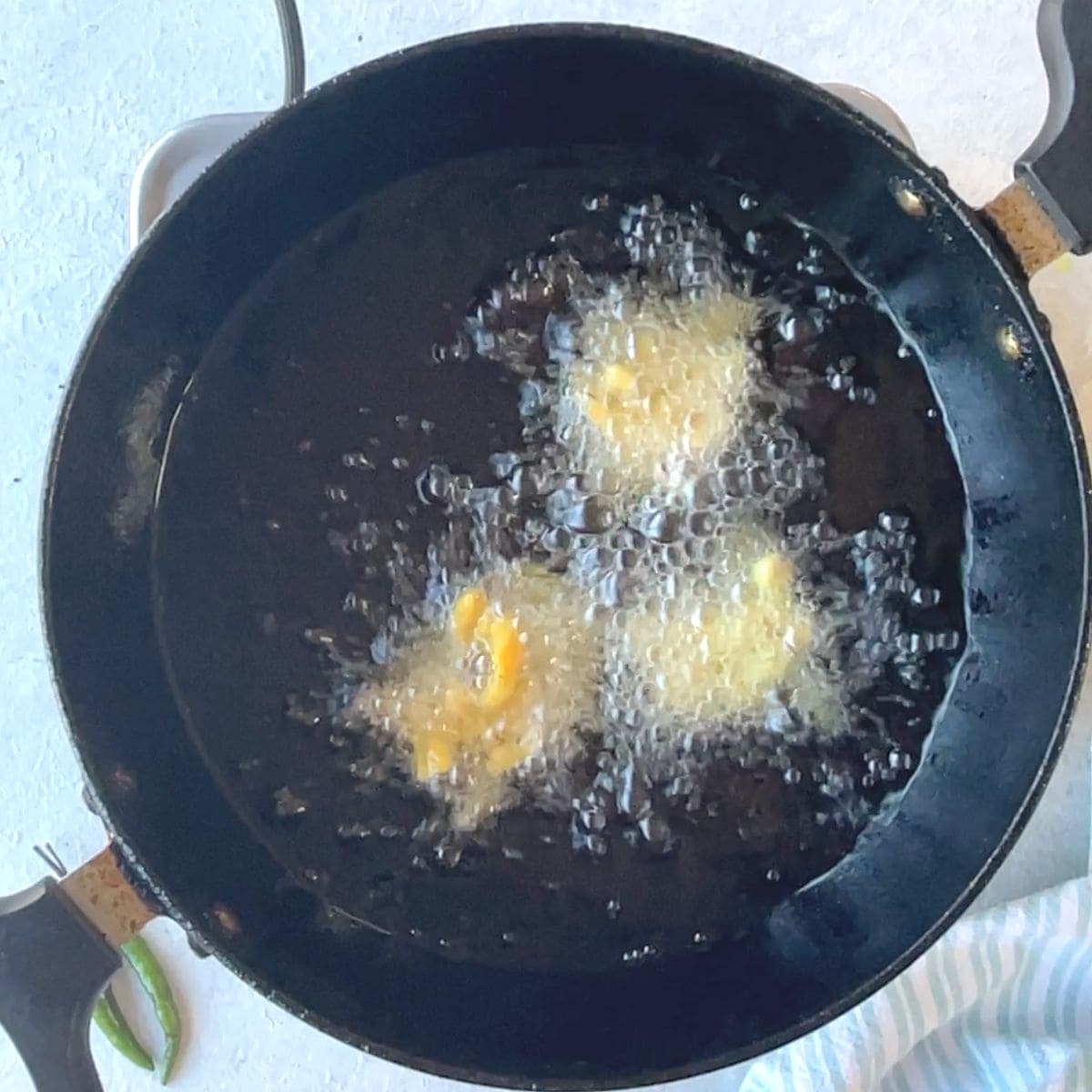
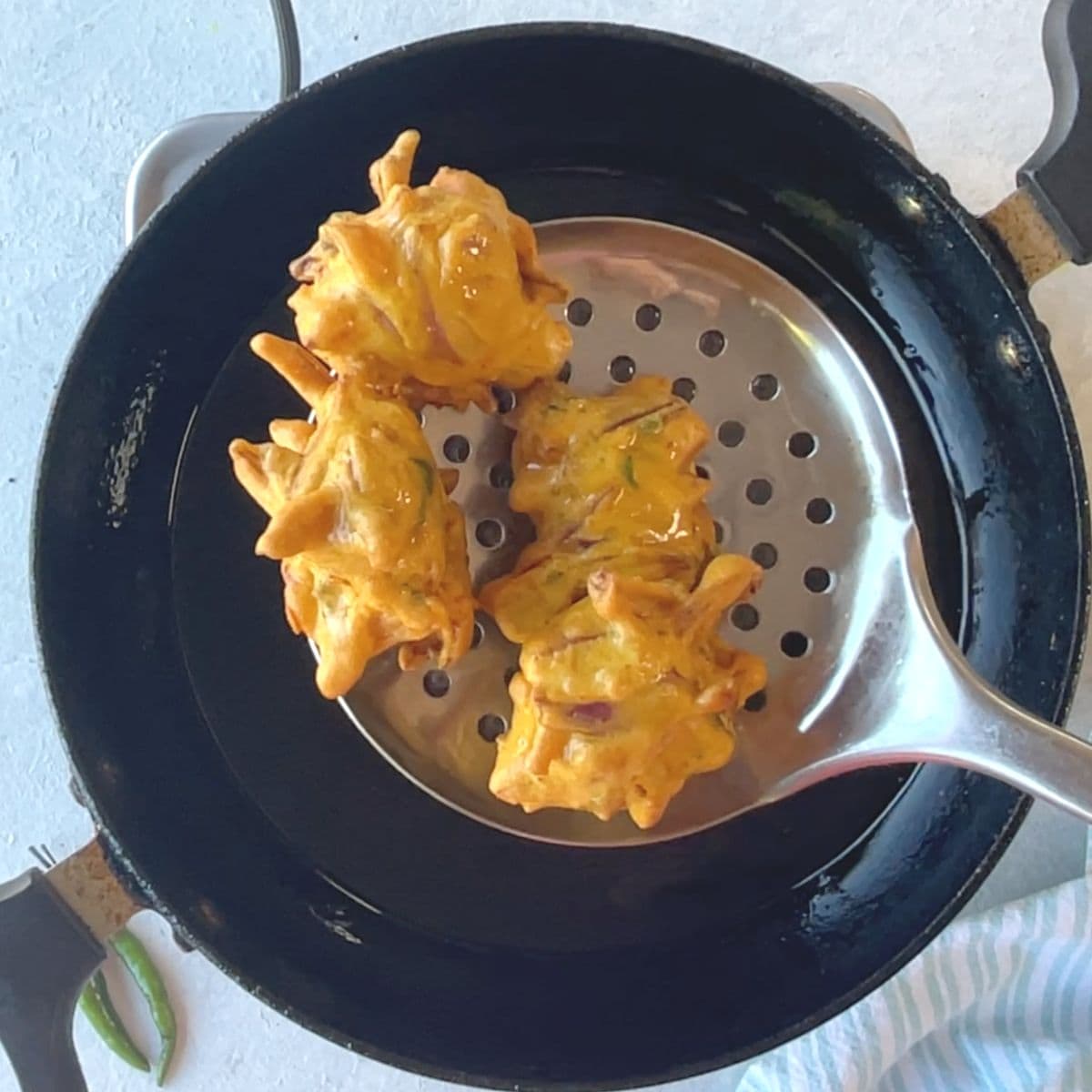
How to make tadka for Punjabi Kadhi?
- In a small pan, add ghee and heat it on medium heat. Add cumin seeds and whole dry red chili’s. Once seeds crackle, take the pan off heat.
- Add the Kashmiri Red chili powder, and give a quick stir.
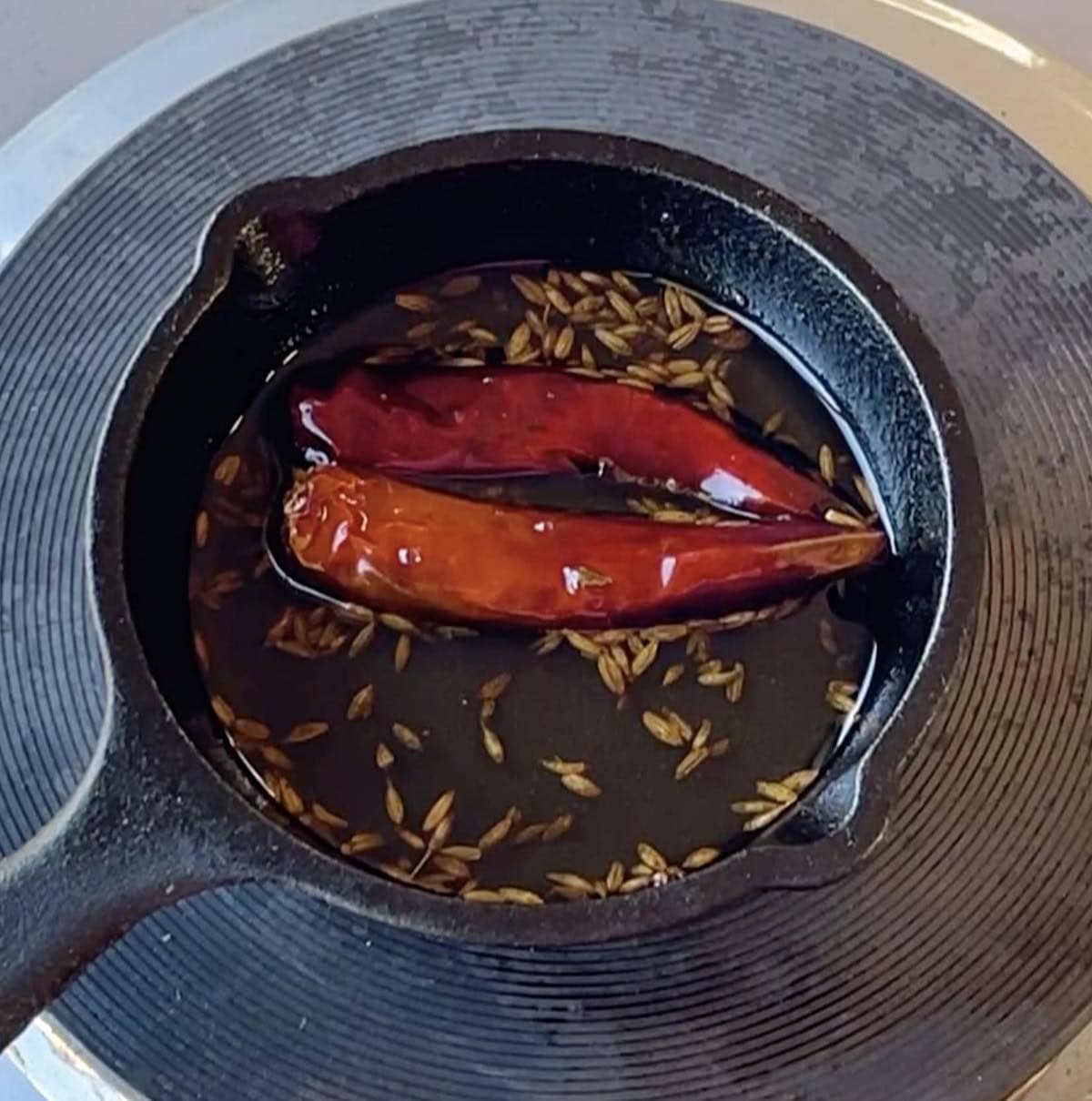
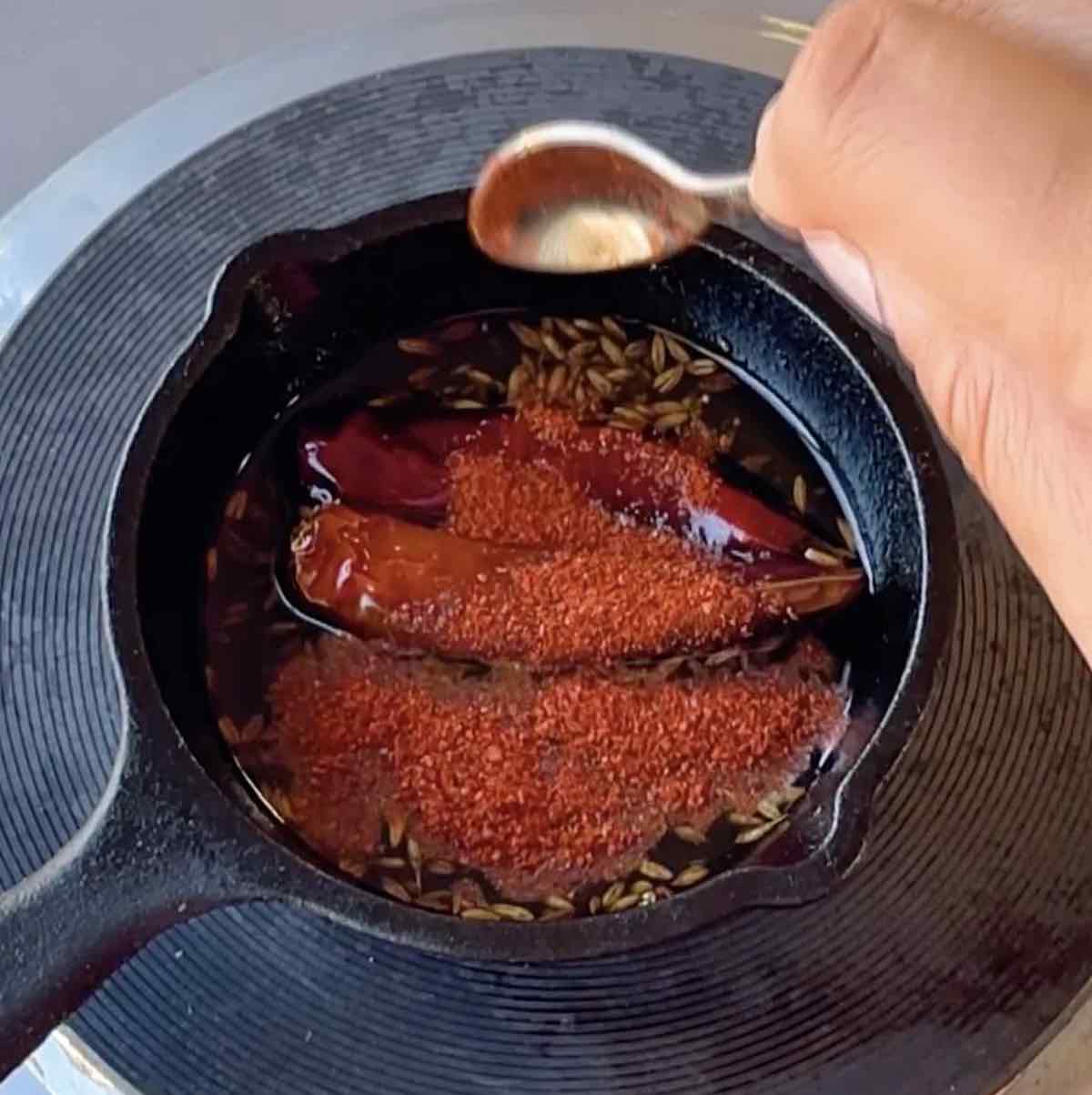
- Now right away add the pakoras and pour the tadka on the kadhi. (Don’t delay, as otherwise the red chili powder can burn)
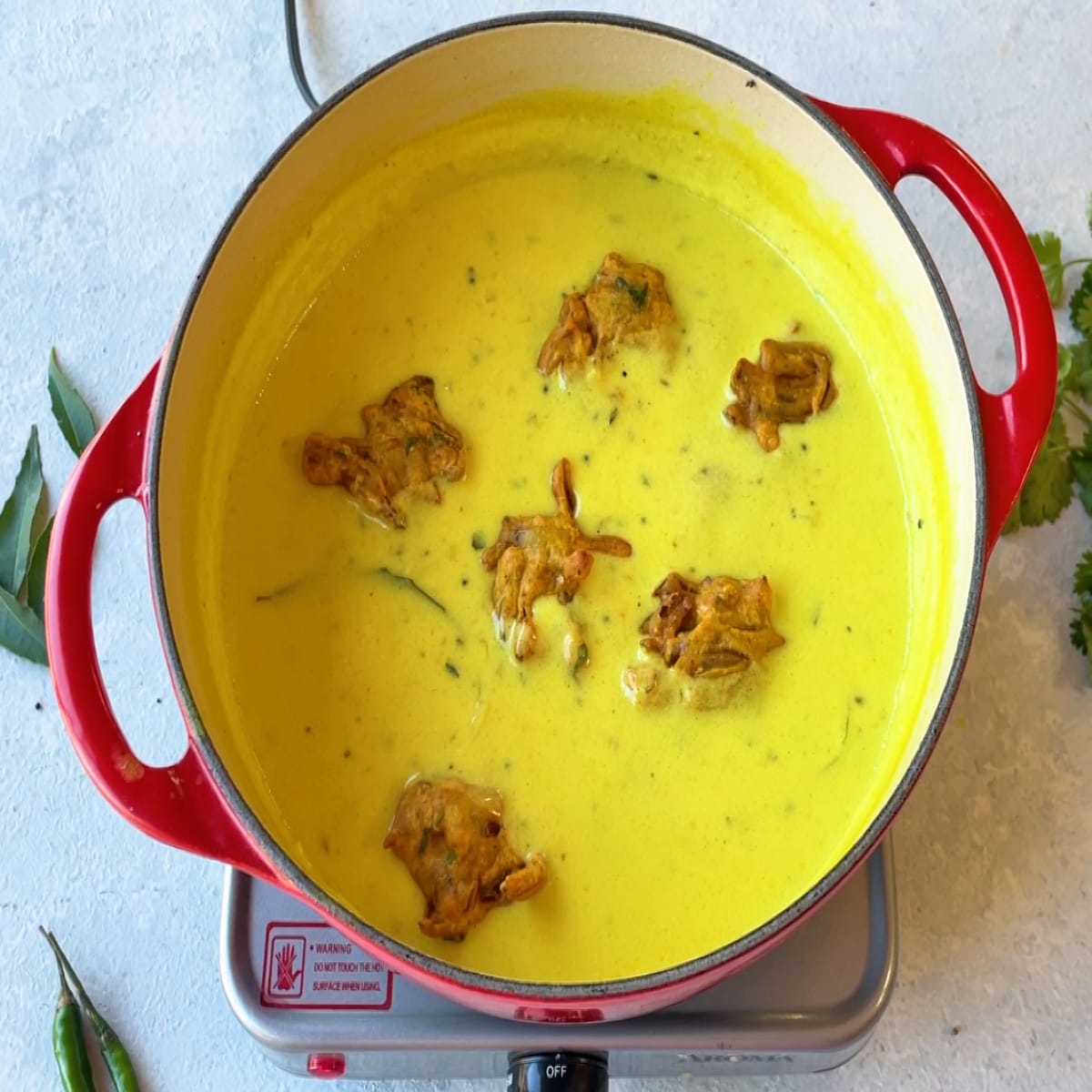
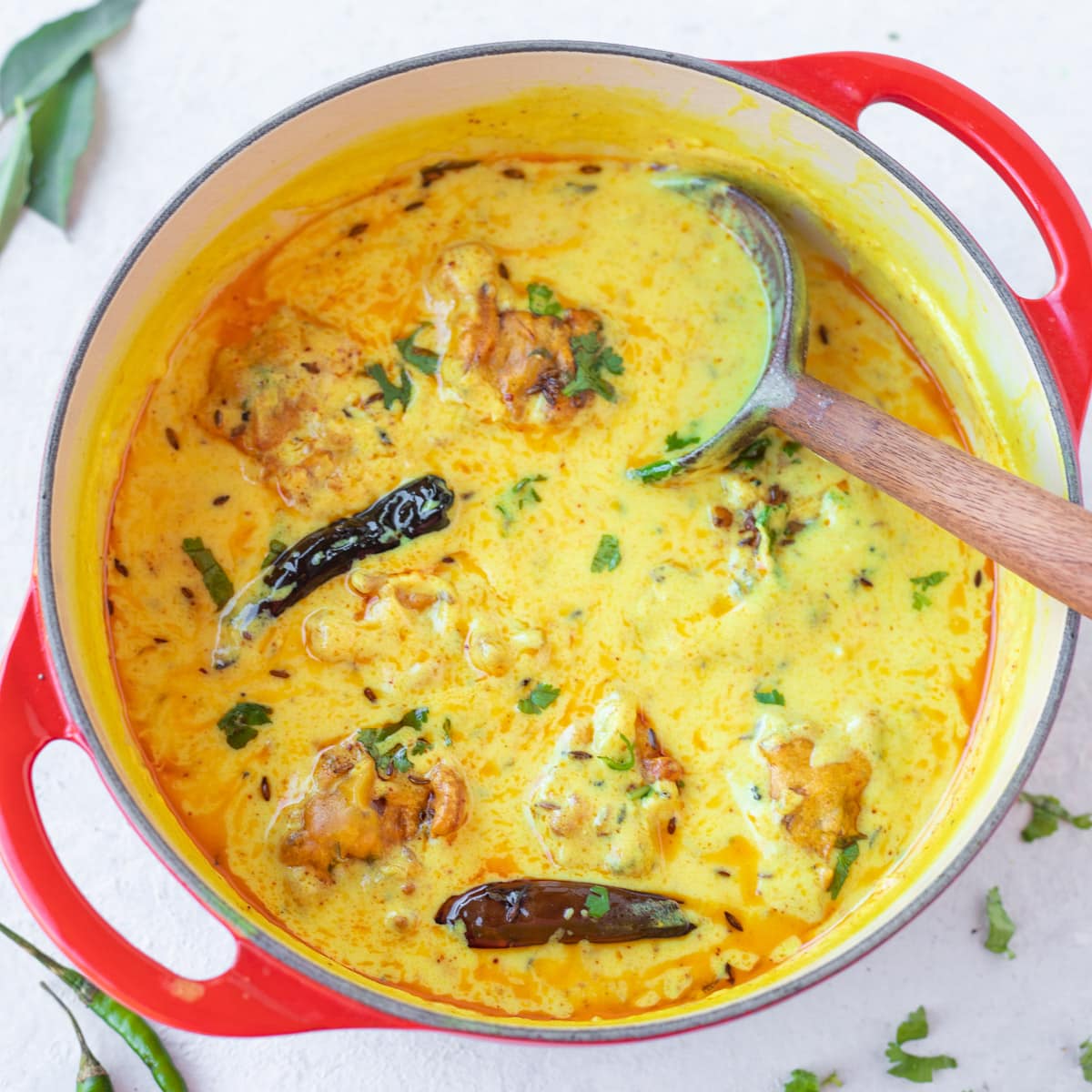
- Garnish with cilantro and serve with rice to enjoy the best kadhi shawl.
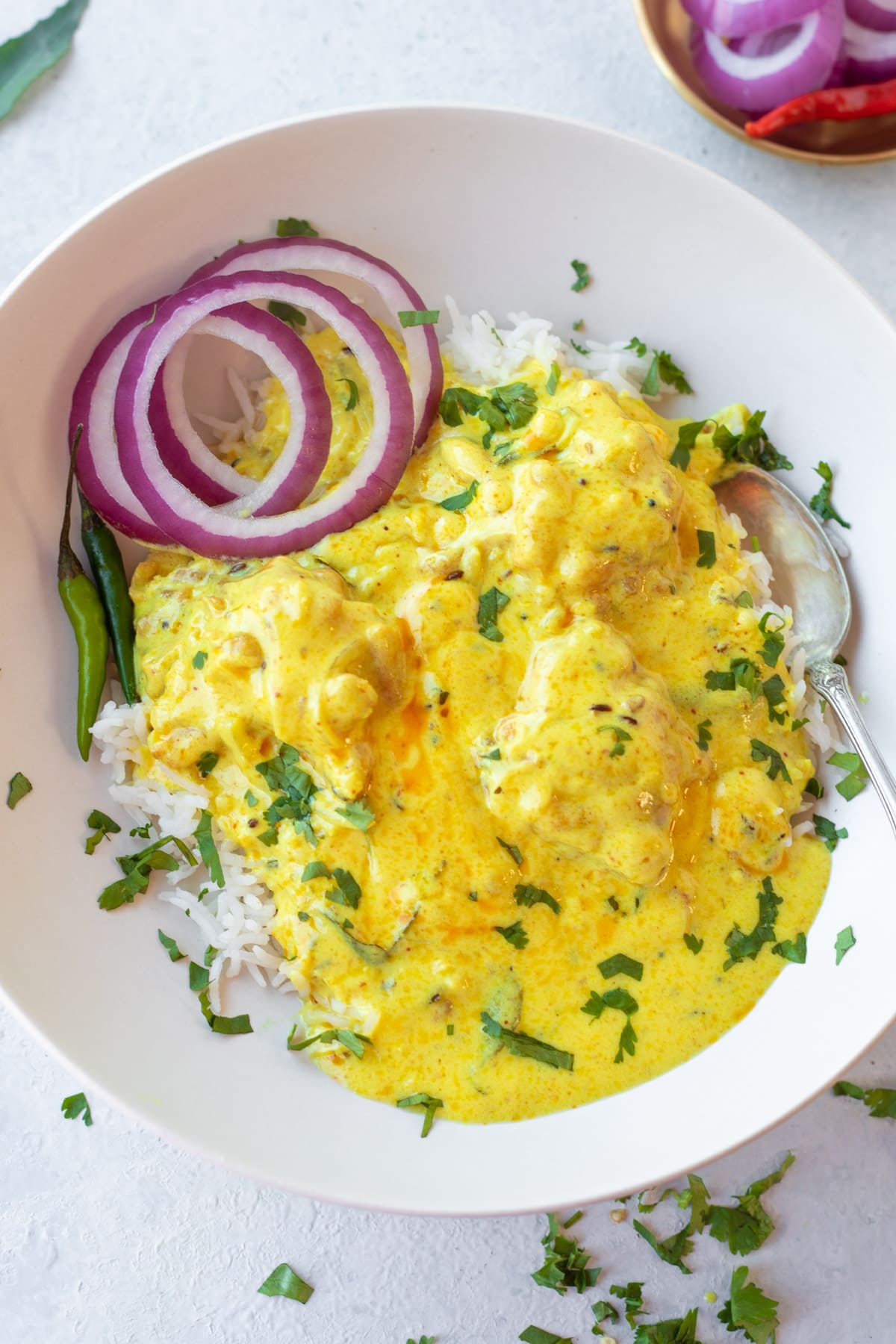
Pro-tips
- Yogurt: Use only plain full-fat yogurt. Flavored or sweet yogurt must not be used. To make kadhi, use sour yogurt. Yogurt that has gone stale and sour makes a delicious kadhi.
- Stirring: Mentioning this is one of the most important tip. Once you add the yogurt mixture to the pot for cooking the kadhi, it is IMPORTANT to keep stirring the c=kadhi continuously until it comes to a boil. If you leave it, there is a high chance the yogurt will split.
- Adjust consistency: The kadhi thickens as it cooks and with time when it is sitting, so adjust the consistency by adding water.
- Oil: Using mustard oil for cooking will give you a pleasantly pungent aroma, enhancing the taste of the kadhi. This will give the authentic traditional flavor to the kadhi.
- Curry leaves: Curry leaves are not commonly used in Punjabi cooking, but they add a ton of aroma and flavor to the Kadhi, and I love to use them in this recipe.
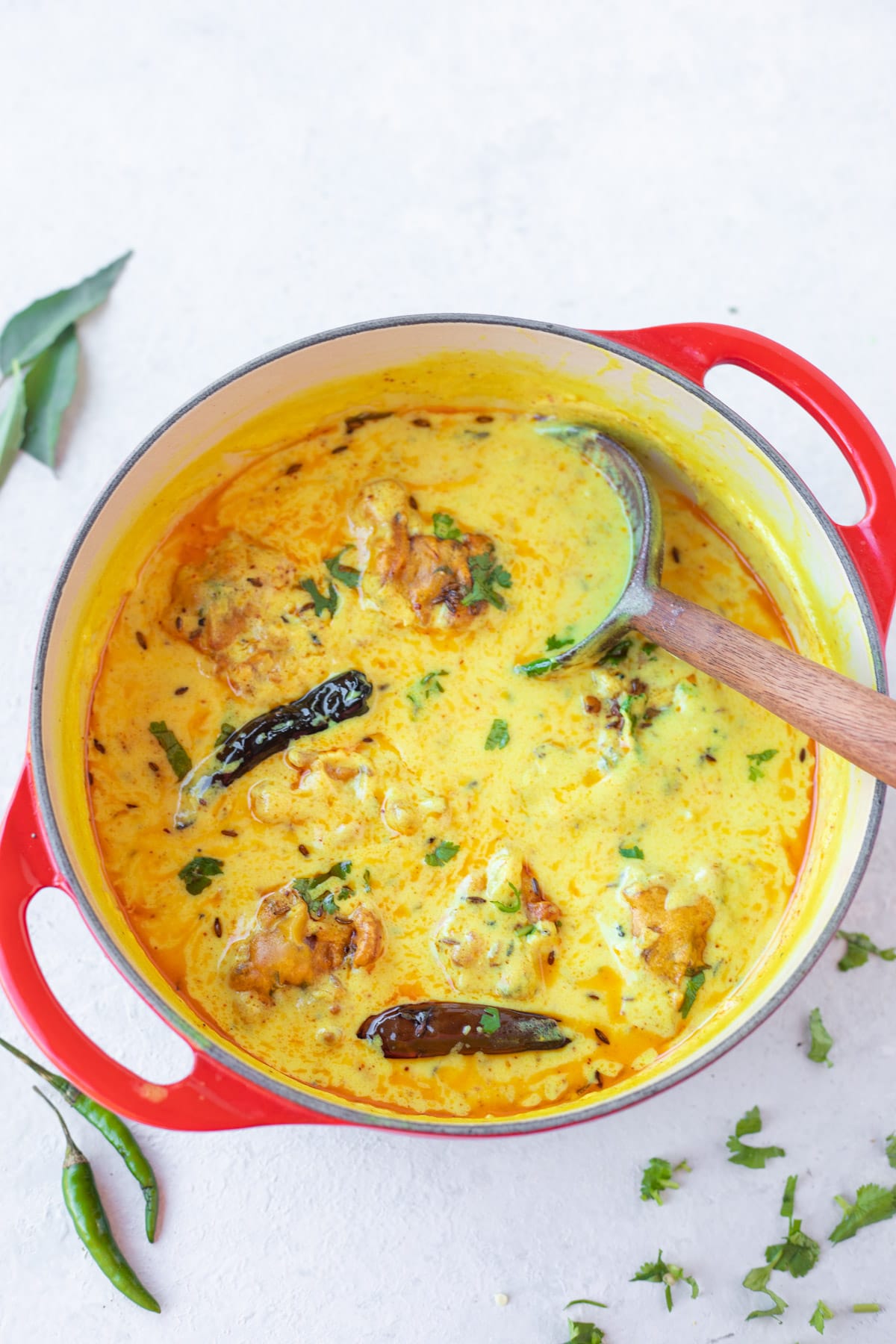
Variations
Pakoras: For the pakoda, you can add chopped spinach, methi, or cilantro along with the onions. It makes a massive difference to the flavor and color of the kadhi.
Plain Kadhi: Growing up, I saw my mom making kadhi without the pakora, especially when she was in a hurry and wanted to serve a quick meal on the table. You can also add readymade boondi. Add it just before the final boil. The boondi absorbs the liquid from the kadhi and swells up.
Besan substitutes: In Northern India, during fasting in Navratri, buckwheat, chestnut, or amaranth flour may be substituted for besan.
Some regional variations for kadhi are:
Gujarati Kadhi: This is a type of kadhi made in Gujarat. This kadhi is sweet, has no pakoras, and has a thin consistency. You will love my recipe for Gujarati Kadhi.
Rajasthani Kadhi: The Rajasthani Kadhi is aromatic and super spicy. It pairs well with Bajri ki roti. This variation uses whole spices as compared to powdered ones.
Maharashtrian Kadhi: Maharashtrian-style Kadhi is perfect for a summer meal, and you can make it with just a few ingredients. Yogurt and gram flour are the essential components. Still, there are a few different types – Solkadhi is prepared with Kokum, Aambyachi Kadhi is made from Kacchi Kairi (raw mango), takachi kadhi is made from buttermilk.
Sindhi Kadhi: This is a unique preparation and does not use yogurt. Instead, tomato and tamarind pulp is used for tanginess. It contains besan and vegetables such as beans, okra, potatoes, cauliflower, etc.
Bihari Kadhi: It is also known as Kadhi Bari. It contains fritters, just like the Punjabi version. This one, however, does not require onion and garlic. The main element of this Kadhi is the Panch phoran (5 spices).
How to Store?
You can refrigerate the pakora and kadhi separately for 2-3 days. The kadhi tastes even better when enjoyed the next day. However, I suggest not storing them longer once pakoras are added to the kadhi.
You must remember that Kadhi thickens when stored, so add little water (depending on the desired consistency), stir, and thin it out before reheating.
You can also plan and prep this recipe in advance. Keep them separate till you are ready to serve. You must add the pakoras to the kadhi just 15-20 minutes before serving and simmer on low heat. This will keep the texture of the kadhi intact, and will allow the pakoras to soak in the flavors.
What To Serve With Kadhi?
I love Kadhi pakora with basmati rice, and it’s genuinely a combination like no other. A warm bowl of “Kadhi Chawal” is Punjabi comfort food, just like dal-chawal or rajma- chawal. Chawal is rice, dal is lentils, and rajma is red kidney beans.
But you can also serve it with Indian bread like roti or paratha.
A side of Kachumber salad or Indian Onion Salad adds taste and texture to your meal.
Mint Cilantro Chutney or mango pickle with Kadhi and rice elevates your meal to the next level.
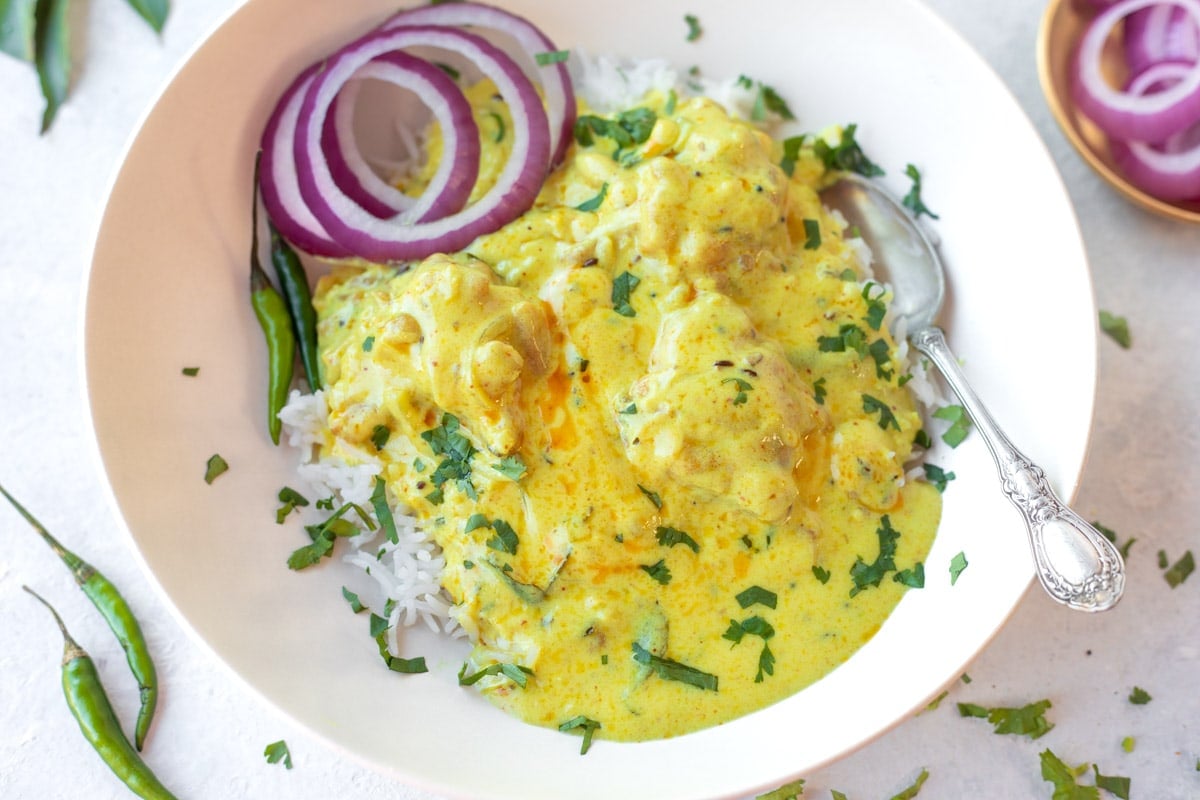
Common Questions
Kadhi Pakora is loaded with vitamins and minerals. It is rich in protein, calcium, and phosphorus. The good bacteria in the yogurt improve digestion and help maintain gut health. Calcium and phosphorus help with healthy teeth and bones. Having a low glycemic index, it is perfect for people with diabetes.
This is one of the crucial steps, and you can prevent your kadhi from splitting if you take the following precautions:
*Use yogurt that is at room temperature. Before preparing the kadhi, leave the yogurt on the kitchen counter.
*Add enough besan and water to make a smooth, homogeneous yogurt besan batter. Remember to blend it well.
*Keep the heat low while adding the yogurt, besan, and water mixture. The mixture will curdle if exposed to high temperatures.
*Stir continuously until well combined, then gradually increase the heat to medium-low, then medium, stirring continuously until it comes to a boil.
*Add salt to the kadhi after it has come to a boil and with constant stirring.
Punjabi kadhi freezes well for a couple of weeks! You must, however, freeze the kadhi and pakoras separately. Once the kadhi is cooled down, store in a freezer safe container.
Also, the tadka tastes best when added right before serving, so I wouldn’t recommend freezing the kadhi with the tadka. If you add it later, it’ll freshen up the kadhi.
Thaw the kadhi in the refrigerator overnight, and when you are ready to eat, reheat it, add the pakoras and the tempering and serve.
Yes, you sure can. Simple use plant-based yogurt instead of regular yogurt (such as cashew yogurt or soy yogurt). Also, substitute the ghee with vegan butter or any vegetable oil.
Pakoras added to kadhi are already vegan.
More Punjabi Recipes
- Punjabi Rajma (Red Kidney Bean Curry)
- Wadi Chawal (Punjabi Wadi Rice)
- Bharwa Karela
- Punjabi Kala Chana Curry
- Saag Paneer
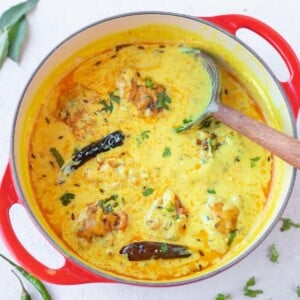
Kadhi Pakora
Video
Ingredients
For yogurt mixture
- 2 cup Yogurt, at room temperature
- 1/4 cup Besan (gram flour), packed
- 1 teaspoon Salt
- 1/4 teaspoon Ground Turmeric (Haldi powder)
- 4 cup Water
To make kadhi
- 2 tablespoon Ghee or Oil
- 1/8 teaspoon Asafoetida (Hing), skip for gluten-free
- 1/2 teaspoon Cumin seeds (Jeera)
- 1/2 teaspoon Mustard Seeds (Rai)
- 1/4 teaspoon Fenugreek seeds (Methi dana), optional
- 10-12 Curry Leaves (Kadi Patta), optional
- 2 Green chili, cut lengthwise and halved
- 1 teaspoon Ginger, grated
- 3 cloves Garlic , mince (optional)
- 1/2 cup Onions, sliced
- 2 teaspoon Coriander powder (Dhaniya powder)
- Cilantro, to garnish
For Pakora
- 1/2 cup Gram flour (Besan)
- 1 Green Chili Pepper, finely diced
- 2 tablespoon Cilantro leaves , chopped
- 1/2 teaspoon Salt
- 1/4 teaspoon Ground Turmeric (Haldi powder)
- 1/2 teaspoon Kashmiri red chili powder
- 1/2 teaspoon Coriander powder (Dhaniya powder)
- 3 tablespoon Water , or more as needed
- 1 cup Onion , sliced or chopped
- Oil, for frying
For tadka
- 1 tablespoon Ghee
- 1/2 teaspoon Cumin seeds (Jeera)
- 2 Dry Red Chili
- 1/2 teaspoon Kashmiri red chili powder
Instructions
For yogurt mixture
- In a large bowl, add yogurt, gram flour, salt and turmeric. Whisk it well. Then add water, continue whisking to make sure no lumps are formed.
To make Kadhi
- Heat a large pot on medium-high flame. Add the ghee or oil. If possible, use mustard oil, it gives an authentic flavor to the kadhi. Make sure to heat the mustard oil until it smokes.
- Add the asafoetida, cumin seeds, mustard seeds, fenugreek seeds, curry leaves. Let them splutter.
- Add the green chili, ginger, garlic, and saute for 30 seconds.
- Add the onions and saute for a minute. Then add the coriander powder and give it a mix.
- Add the prepared yogurt mixture to the pot while stirring continuously.
- Keep stirring until it starts to boil. (We don't want the kadhi to curdle)
- Once boiled, keep on low and simmer for about 20-25 minutes.
For pakora
- In a bowl, mix all the pakora ingredients except onions and oil. If you have time, keep this mixture for about 15 minutes. This helps to make soft pakoras. If not, add a pinch of baking soda to the gram flour batter. This will be a thick batter, not a runny batter.
- Add onions and mix well. You want to add onions to the batter when you are ready to fry the pakoras.
- Heat vegetable oil in a large frying pan (kadhai) over medium to high heat until it reaches 300°F. Once oil is hot, lower the heat to medium.
- Use a small scoop (or your fingers if you are comfortable) and drop the pakoras in the oil. Cook several minutes per side until the pakora is golden brown. Turn the pakoras to make sure they cook evenly on the other side. Transfer the pakoras to a paper towel lined plate or bowl.
- Kadhi should have cooked well by now. If the kadhi has thickened too much, you can add more water if you like.
- Add the pakoras to the kadhi and let it continue to simmer on low heat.
Making tadka
- In a small pan, add ghee and heat it on medium heat. Add cumin seeds and whole dry red chili's. Once seeds crackle, take the pan off heat.
- Add the Kashmiri Red chili powder, and give a quick stir. Now right away pour the tadka on the kadhi. (Don't delay, as otherwise the red chili powder can burn)
- Give a quick stir. Garnish with cilantro, and enjoy kadhi pakora with rice!
Notes
-
Add 1 teaspoon of oil to the onion batter. This can help make the air fryer pakoras softer inside. Preheat the air fryer to 400°F.
-
Spray air fryer with some oil. Pick some batter in your fingers, and flatten in a patty like shape. Then place it in the air fryer basket. Make sure the pakoras don’t touch each other. Do not overcrowd. Spray some oil on top.
-
Air fryer at 350°F for 12-14 minutes. Flip the pakoras at about 9 minutes.
-
Once they are golden and crispy, take out on a plate lined with paper towel.
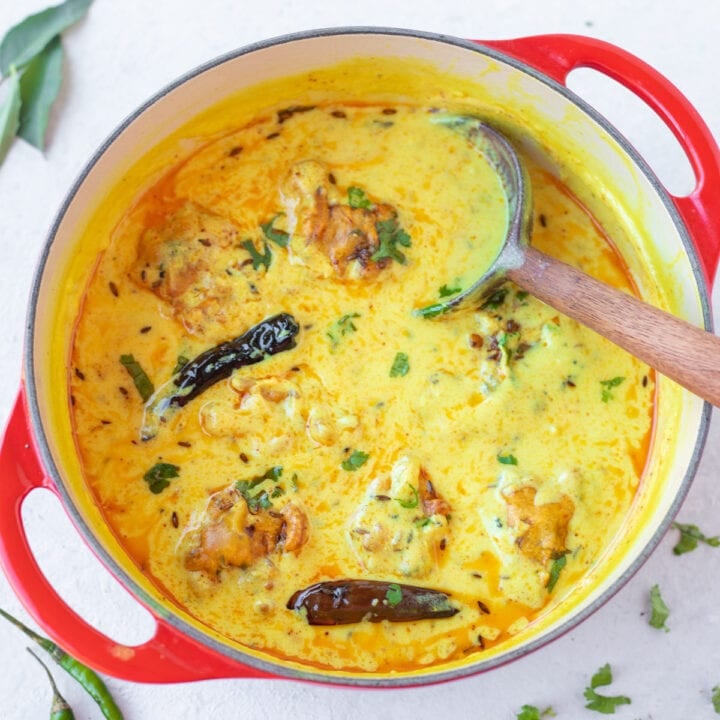
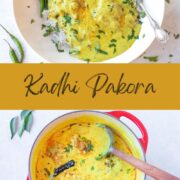
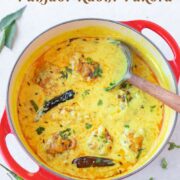
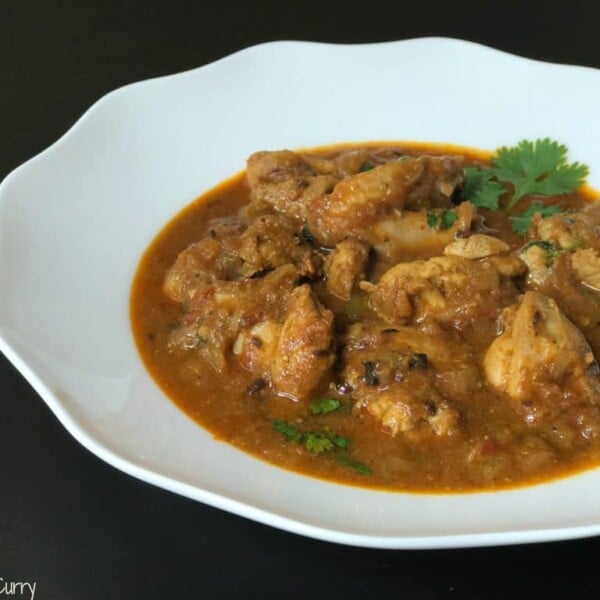
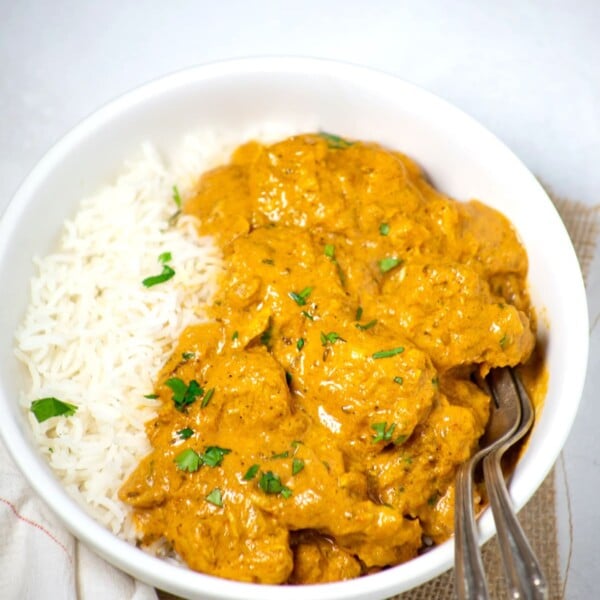
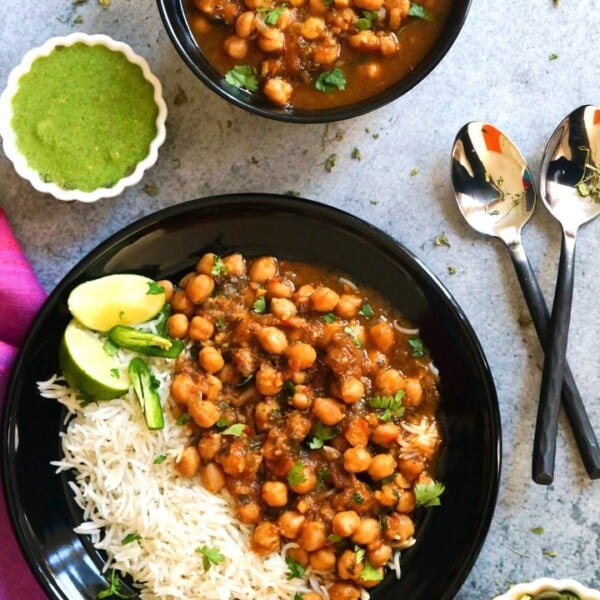
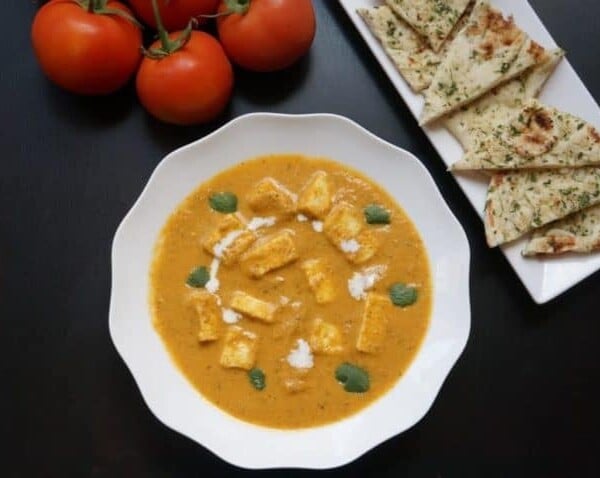








So delicious and comforting recipe. I have made this 4 or 5 times now and it is easy to follow and always comes out good. I am not Indian, but my husband is and he loves it also.
Hi Jessica – That’s wonderful! I’m so glad you and your husband enjoy it.
Hi Meeta, is your estimated nutritional info based on the kadhi with a couple pakoras added per seving or without? Thanks!
Hi Roop – The nutrition calculator includes all the ingredients, so the pakoras are included. Unfortunately, we cannot estimate the amount of oil in each pakora.
Thanks for the nice recipe. I do not always like using too much of curry leaves in Punjabi style dishes as they take away other subtle flavours and definitely do not taste Punjabi. I wanted to add that I used extra dry chervil leaves which provides a roundness to the yogurt. this was often done by my mother who was from the Punjab as i recall. Do not be shy about using extra! The Punjabi Khadi is also good with breads (nan, chapati, pranthas) with gram flour mixed in regular flour and a touch of green chilies. cheers.
Hello Shivcharn – Thank you for sharing your experience and your mom’s tips. I agree that often curry leaves are not used in the Punjab region.
Wonderful post
This recipe was delicious! I was looking for a kadhi recipe with curry leaves but I don’t like sweet. This was perfect. I added some bhindi with the onions. Thank you for a great recipe!
Hi Alison – So good to hear that. Than k you for sharing it 🙂
Dear Meeta, it’s a very good recipe. I am from UP, (living in the US past 50 yrs), I have both Punjabi and Gujarati friends, I love both styles of Kadi, I make in UP style, no Piyaz Pakoras,. Only thing I do not add Curry Leaves in my Punjabi style Kadi. Thank you for sharing your version. 💞
Hi Meena – Thank you for your kind words and sharing the other variations of kadhi.
Hi Meeta, karhi sounds good but can it be made in the instant pot?
Apart from pakoras being fried separately.
Thanks
Hi Rajinder – Kadhi can be made in instant pot, but it is a little different recipe. I will share it soon.